Con el Suunto 5 la marca finlandesa continúa actualizando su gama para dotarlos, entre otras cosas, de un nombre más sencillo. Atrás queda la denominación Spartan. El Suunto 5 es el sustituto del pequeño Spartan Trainer, el modelo más económico de toda la gama. Y era muy barato porque los materiales eran… baratos. Pero el Suunto 5 es otra historia, su terminación es completamente diferente y de nuevo vuelve a ser un Suunto de pura cepa: sólido, bien hecho y con un aspecto fantástico.
Llevo más de un mes probando y analizando el «pequeño» Suunto 5. Me ha acompañado en otras pruebas que ya he podido publicar en la página, siendo ahora su turno para disfrutar de un análisis para el sólo.
Como ya sabrás si eres lector habitual de la página, a continuación te vas a encontrar un análisis del reloj absolutamente detallado; con todas sus cosas buenas, pero también las malas. Todo para que cuando vayas a realizar tu compra sepas si el Suunto 5 cumplirá tus expectativas o es mejor optar por otro modelo que se adapte mejor al uso que vas a darle. Si no eres lector habitual, ¿por qué no lo eres?
Si te gusta este análisis y te resulta de utilidad para decidir la compra de tu próximo reloj GPS, por favor usa los enlaces que encontrarás en esta página (bueno, puedes comprar ese reloj GPS que quieres o cualquier otra cosa). No pagarás más de lo que vale, pero el vendedor retorna un pequeño porcentaje que es lo que ayuda a cubrir los gastos de alojamiento de la página y, obviamente, mi trabajo. O también puedes suscribirte como miembro VIP.
¡Vamos con todos los detalles del Suunto 5!
Navegar a secciones específicas
Resumen
Funcionamiento global - 9
Posibilidades de entrenamiento - 8
Plataforma y aplicaciones - 7
Autonomía - 9
Acabados y comodidad - 9.5
Relación precio/prestaciones - 8.5
8.5
TOTAL
El Suunto 5 representa la gama media de la marca finlandesa, pero prestacionalmente hay muy poco que le separa de la gama más alta. Principalmente tres cosas: altímetro barométrico, brújula magnética y más modos de batería. Si buscas un reloj bien hecho de gama media el Suunto 5 es un digno candidato.
- Un mini Suunto 9. Casi las mismas funciones que su hermano mayor pero a menor precio
- Fantástica calidad de acabados
- Muy buena autonomía
- Muchísimos perfiles de deporte que poder configurar para cubrir casi cualquier deporte
- Tamaño y visibilidad de pantalla, especialmente cuando estamos usando el fondo negro
- Continúa usando el cable con pinza de los Ambit
- No es posible sincronizarlo a través del ordenador, sólo para actualizaciones
- Suunto App todavía está un poco verde
Novedades Suunto 5
El Suunto 5 se une a los ya existentes Suunto 3 y Suunto 9 en una escala de números impares que ayuda a comprender hacia qué rango del mercado está orientado.
La nomenclatura ahora está bastante más clara que antes. O lo estaba, porque el Suunto 9 llegó como tal y luego al modelo original tuvimos que llamarle Suunto 9 Baro, porque ese nombre ahora lo ocupaba otro modelo igual, pero sin altímetro barométrico. Cuando Suunto parecía que lo tenía todo atado y bien atado, lo volvieron a estropear…
En definitiva, así es como se presenta la gama actualmente:
Suunto 3: Reloj de monitorización de actividad y fitness, sin GPS
Suunto 5: El de esta prueba. Reloj GPS multideporte de tamaño más reducido
Suunto 9: Modelo tope de gama de la marca con funciones avanzadas de autonomía y montaña
Suunto 9 Baro: Lo mismo que el anterior, pero con altímetro barométrico
¿Que falta un número en la nomenclatura? Sí, el Suunto 7, pero no les digas que te lo he contado yo, que quede en secreto entre nosotros…
A la hora de revisar cuáles son las novedades del Suunto 5, la comparativa con el Suunto Spartan Trainer WHR es evidente. El formato es el mismo, el tamaño del reloj, el diseño… todo es muy continuista con respecto a éste, pero mejor.
Las novedades que el Suunto 5 aporta con respecto al Spartan Trainer (que lleva unos 2 años en el mercado) son las siguientes:
- Cambia el nombre por uno mucho más sencillo. «Suunto 5» es indiscutiblemente mucho mejor que «Suunto Spartan Trainer Wrist Heart Rate»
- Importante salto en la calidad de los materiales: bisel y botones de acero inoxidable en lugar de plástico, cristal mineral en lugar de plástico, incluso el tacto de la correa es algo mejor
- Nuevo chipset GNSS de Sony
- Nuevos modos de funcionamiento para recepción de satélites: GPS, GPS + GLONASS, GPS + Galileo
- Aumento de la autonomía hasta 20 horas en uso de GPS normal, con modo extendido hasta 40 horas
- Al igual que en el Suunto 9, añade modos de batería inteligentes con selección antes y durante la actividad
- Planes de entrenamiento personalizados y adaptativos (disponible en el Suunto 3, pero no en el Suunto 9)
- Métricas de sueño para verificar que el descanso ha sido satisfactorio (disponible en el Suunto 3, pero no en el Suunto 9)
- Seguimiento de estrés durante las 24 horas (disponible en el Suunto 3, pero no en el Suunto 9)
- Medición de recursos disponibles (disponible en el Suunto 3, pero no en el Suunto 9)
- Añade estimación de VO2Max (disponible en el Suunto 3, pero no en el Suunto 9)
- Sólo compatible con Suunto App para sincronización, y Sports Tracker como plataforma web. No se puede usar con Movescount o Suuntolink (este último sólo para actualizaciones de firmware).
En resumen, el Suunto 5 es un mini Suunto 9 con los algoritmos de Firstbeat que están presentes en el Suunto 3. Es una combinación de las mejores características de cada uno de ellos: materiales, modos de batería inteligentes y autonomía del Suunto 9; con todas las métricas del Suunto 3.
Pero por comparar peras con peras y manzanas con manzanas, creo que también es importante destacar cuáles son las diferencias que existen entre el Suunto 5 y el Suunto 9. La principal es el tamaño, siendo bastante más grande el 9. Esto hace que el tamaño de tu muñeca sea prácticamente lo que marque la elección entre uno y otro modelo. Pero no es lo único:
- El Suunto 5 es más pequeño. tiene un diámetro de 46mm por 50mm del Suunto 9
- También es más delgado, 14,6mm contra 16,8mm
- El Suunto 5 no tiene altímetro barométrico. Sí lo tiene el Suunto 9 Baro (pero no el Suunto 9 normal)
- La brújula del Suunto 5 es digital. Tienes que estar moviéndote para que el reloj sepa en qué dirección te estás moviendo. La del Suunto 9 es magnética
- Dado que no tenemos brújula digital, tampoco tenemos la función FusedTrack del Suunto 9 para los modos de ahorro de batería
- La autonomía en el Suunto 9 es mayor (hasta 40 horas en el Suunto 5, 50 en el Suunto 9), además de tener un modo adicional de batería inteligente que permite alcanzar 120 horas en el caso del Suunto 9
- La pantalla del Suunto 5 no es táctil, por lo que tiene 5 botones de control. Personalmente lo prefiero de esta manera.
- La iluminación de pantalla no es regulable. Sólo encendida o apagada, y algo más atenuada en caso de activar el modo no molestar.
- Sincronización exclusiva con Suunto App. Con el Suunto 9 puedes elegir con qué plataforma trabajar (de momento…)
- Tiene todas las métricas de Firstbeat: estimación VO2Max y edad fitness, planes de entrenamiento adaptativos, recursos disponibles (como la función Body Battery de Garmin), análisis del sueño
Supongo que más o menos ya te han quedado claras las diferencias entre todos ellos. Pero como esto va del Suunto 5, vamos a repasar todo lo que debes saber.
Suunto 5 y sus funciones
Todos los fabricantes siguen el mismo patrón: crean un nuevo modelo con un sistema operativo básico sobre el que van añadiendo funciones en modelos sucesivos. No sólo en el mundo de los relojes GPS, también en telefonía, imagen, etc.
Suunto hace lo mismo, porque hoy en día es la forma de trabajar. Si ya estás familiarizado con los últimos relojes de Suunto desde la gama Spartan no encontrarás muchas novedades en el Suunto 5.
Pero antes de ir a la parte del software, ¿te parece bien que te hable de lo que tenemos por fuera?
Lo que más llama la atención del Suunto 5 a primera vista son sus acabados. La diferencia con respecto al modelo al que sustituye, el Suunto Spartan Trainer, es inmensa. La calidad percibida es mucho mayor por los materiales utilizados (cristal, acero inoxidable y policarbonato), además de que el diseño está claramente inspirado en el Suunto 9.
De hecho el Suunto 5 está fabricado en Finlandia, al igual que el resto de sus hermanos, mientras que el Spartan Trainer venía desde China.
En cuanto a colores, ahora mismo se ofrecen cuatro versiones diferentes. Además de los clásicos blanco y negro, hay otros dos con el bisel en dorado: en gris y en granate (el que ves en esta prueba).
Debido a que el Suunto 5 mantiene el diseño con antena de satélite externa -bajo la pantalla-, el cambio de correa no es directo porque el diseño es específico. No quiere decir que en caso de rotura no haya recambio -que lo hay-, sino que el recambio tiene que ser específico ya que no es una correa de diseño genérico.
En cuanto a menús todo es muy sencillo, pudiendo hacer ajustes básicos como configurar alarmas, conectar sensores o cambiar la esfera del reloj.
La configuración para los perfiles de deporte se hacen exclusivamente con el teléfono móvil a través de la nueva Suunto App, un cambio bastante positivo porque está muy bien resuelto.
Configuración con Suunto App
El Suunto 5 es exclusivamente compatible con Suunto App, no pudiendo sincronizarse con la antigua plataforma Movescount (un punto negativo con respecto al Suunto 9 que puede usarse en ambas). De todas formas no es algo que sea importante para el futuro, porque Movescount tiene fecha de cierre para verano 2020.
La configuración de los modos de deporte se hace desde aquí. No podemos editar los modos predefinidos, pero sí podemos crear perfiles de deporte nuevos. Hacerlo desde el móvil es rápido, sencillo e intuitivo, aquí el trabajo de Suunto ha sido muy bueno.
Permite configurar tres pantallas de datos diferentes, con hasta 7 datos en cada una de ellas.
No tiene por qué ser pantalla sólo con datos, también podemos tener una pantalla con gráficas, pantalla de resumen de vueltas o específicas para realizar intervalos.
La cantidad de datos que podemos mostrar es enorme, Suunto no recorta ninguno a pesar de no tratarse del modelo de gama alta. Además están ordenados por categoría, por lo que dar con el campo que necesitas es muy fácil.
El resto de opciones se cambiarán desde el reloj. Tiene todo el sentido del mundo, pues se trata de opciones que podemos necesitar cambiar con más frecuencia que las pantallas de datos por lo que necesitamos hacerlo sin tener que depender del teléfono.
Una vez seleccionado el deporte, en la pantalla de búsqueda de señal y sensores, podemos presionar el botón hacia abajo para cambiar el resto de opciones como vuelta automática, sensores a usar, rutas de navegación, o seleccionar un objetivo.
En cuanto a la aplicación Suunto App como plataforma de seguimiento de entrenamientos… pues continúa en desarrollo. Desarrollo lento, pero desarrollo. Para los aspectos básicos es suficiente.
La interfaz es agradable y todo está donde se le espera.
Pero ahí es donde acaba. Falta mucho más detalle a la hora de mostrar tendencias, cómo afecta el entrenamiento pasado, recuperación, etc.
Esto es en la app. El análisis a través de la web de SportsTracker es más simple y sin tanto detalle como la aplicación móvil.
Como digo es suficiente para el análsis básico, pero el problema es que tienen que competir contra plataformas como Garmin Connect o Polar Flow. Te pueden gustar más o menos, pero lo que no hay duda es que a día de hoy tienen muchas más posibilidades que ofrecer. He visto algunas imágenes de lo que está por venir en Suunto App y todo va en esta línea, por lo que a corto plazo debería estar disponible.
Hasta ahora el comprador de Suunto podía elegir si seguir esperando al desarrollo de la nueva plataforma o quedarse en Movescount. El Suunto 3 fue el primero que obligó a usar la nueva plataforma, y estando enfocado a un público objetivo menos exigente se podía pasar por alto.
Pero es la primera vez que Suunto obliga a usar la nueva plataforma para uno de sus relojes «serios», así que va siendo hora de poner la maquinaria a funcionar a pleno rendimiento y empezar a incorporar a Suunto App (y SportsTracker) todas las posibilidades que tenía Movescount.
GPS y modos de batería inteligentes
Una de las novedades con respecto al Spartan Trainer son los modos de batería inteligentes. Es algo heredado de su hermano mayor, el Suunto 9. Eso sí, en el caso del Suunto 5 sólo hay dos modos (el normal y el extendido), pudiendo además configurar un perfil propio con los ajustes que queramos seleccionar.
Los modos se pueden seleccionar también desde la pantalla de deporte mientras esperamos a buscar señal. En la parte superior podemos ver la autonomía restante con el modo seleccionado, pudiendo cambiar el modo simplemente presionando el botón superior.
Desde las opciones también podemos seleccionar el modo de batería que vamos a usar.
O configurar uno con las opciones que más se ajusten a nuestro uso particular.
Debes tener en cuenta que independientemente del modo que selecciones desde aquí, si seleccionas una ruta de navegación la configuración de GPS pasará a máxima. Obvio, porque el reloj interpreta lo que no nos interesa es perdernos por lo que no podemos permitirnos registrar la ubicación cada 30 segundos.
Pero quizás la parte más interesante de los modos de batería inteligentes es que permite cambiarlos mientras estás desarrollado tu actividad, además de que es el propio reloj el que te recomendará cambiar a un modo de ahorro de energía cuando quede poca batería. Recibirás aviso cuando tengas batería al 20% y al 10%.
Todo funciona igual que en el Suunto 9 (en su prueba podrás encontrar más detalles). Y al igual que en éste, con la última actualización de firmware el Suunto 5 también permite seleccionar configuración de recepción de satélites, dando la posibilidad de usar GPS, GPS + GLONASS o GPS + Galileo.
Es una configuración global y no por perfil deportivo, por lo que una vez seleccionado un modo se usará para todas las actividades.
Personalmente preferiría que dependiendo del perfil dejara elegir el modo. Porque por ejemplo en ciclismo de carretera no necesitaría más que GPS, mientras que para carrera por montaña sí podría interesarme la configuración GPS + Galileo (y aquí tienes el por qué).
Métricas de sueño
Pero vamos con las novedades específicas del Suunto 5, empezando por las métricas de sueño. Como en el caso del resto de nuevas funciones de software están licenciadas a través de Firstbeat; por lo que son muy similares a lo que ofrece Garmin, que depende todavía más de ellos para sus métricas. Si bien este análisis del sueño es algo que sólo utiliza Suunto.
Lo primero que debes saber es que para tener el análisis de la calidad de sueño (y el resto de métricas de seguimiento diario) es necesario tener datos de frecuencia cardíaca en reposo, y para ello es necesario activar el seguimiento de FC constante. Esto supone un impacto notable en la autonomía del reloj, ya que el sensor óptico Valencell que utiliza Suunto gasta batería como si de un motor V8 se tratara.
En el caso del seguimiento de sueño del Suunto 5, no sólo registra cuánto tiempo has estado durmiendo, sino si realmente ese periodo de descanso ha sido de calidad. En resumidas cuentas, si hemos recargado energía durante ese tiempo.
Al levantarte por la mañana el reloj te muestra de forma automática un resumen de cómo ha sido la noche. Hasta ahora mostraba simplemente las horas que habías dormido, pero ahora también asigna una valoración a cómo ha sido la calidad del mismo.
En ese ejemplo puedes ver que además de haber dormido poco, el sueño ha sido de mala calidad. Lógicamente he descansado bastante poco, y esas son las sensaciones que tengo. Por cierto, el objetivo de 8h lo he seleccionado yo, cada uno puede marcarse el objetivo que quiera.
Puedes decir… es normal que la calidad del sueño sea baja con tan pocas horas de sueño, seguro que si duermo más horas la calidad será mayor. Pues no necesariamente.
Sólo dos horas y media que pude dormir esa noche y, sin embargo, la calidad del sueño estuvo bastante bien. Corto pero intenso. Como ves la relación entre tiempo dormido y calidad del sueño no está para nada relacionada.
Esta es de las pocas cosas que, tras la sincronización, se muestra en la Suunto App.
En definitiva, piensa en tu cuerpo como si se tratara de una pila recargable. Esta función lo que nos indica es en qué porcentaje se ha recargado durante el tiempo que ha estado en el cargador (tu cama). Este seguimiento se hace sólo en el periodo nocturno, no si te echas una siesta a mitad de día. En ese caso no tendrás datos de calidad de sueño pero sí se tendrá en cuenta ese descanso con la función de Recursos Disponibles.
Recursos disponibles y estrés
Esto es prácticamente similar a lo que en Garmin se denomina «Body Battery». Tan similar que en ambos casos muestra la misma información, sólo que con otro nombre. Nos permite ir viendo cómo vamos consumiendo nuestros recursos de energía a lo largo del día, calculando cuánta energía disponible tenemos en algún momento determinado.
Aquí sí podremos ver el impacto que ha tenido en nuestro cuerpo los descansos que vayamos teniendo a lo largo del día, o ese rato de sofá que has echado sin hacer nada.
Al igual que en el caso del sueño, todo eso supone una recarga para el cuerpo, lo cual se verá reflejado en esta pantalla. Es evidente que cuanto mayor sea el porcentaje de recuperación, tu sensación de vitalidad será mayor. Por tanto tu entrenamiento será más provechoso cuando este nivel sea alto.
Junto a la gráfica de recursos disponibles encontramos una pantalla que indica en qué estado nos encontramos (activo, inactivo, recuperando o estresado) y durante cuánto tiempo llevamos en este estado.
En esta pantalla me indica que llevo 1 hora estando activo.
¿Y para qué sirve todo esto? Pues si sabemos interpretar los datos correctamente te podrá beneficiar en la parte más importante de tu entrenamiento: el descanso. Y además del descanso, saber interpretar cuándo es conveniente entrenar más o menos fuerte, independientemente de las sensaciones «eufóricas» que puedas tener cuando estés a punto de darle al botón Start en el reloj.
Volviendo a los ejemplos que he puesto anteriormente, el día 2 de agosto dormí 4 horas y media. La noche siguiente todavía menos, sólo 2,5 horas. Como es lógico la recuperación que ha podido tener el cuerpo es bastante baja y prueba de ello son los recursos que indicaba la gráfica que has visto más arriba (9%). Y eso que ese día aún no había entrenado.
A pesar de no haber entrenado, llevaba dos días sin hacerlo, y ya conoces esa sensación… parece que vas a perder los 6 meses de entrenamiento anteriores por perder tu sesión durante dos días. Podría haber dicho: «un trote suave y por lo menos apunto unos km».
Sin embargo la gráfica de recursos disponibles era clara: mi cuerpo no estaba recuperado de los dos días anteriores (viaje, boda, viaje, cumpleaños…) por lo que después de tanto ajetreo y tan poco descanso, salir a entrenar problablemente no era lo más inteligente que se me podía ocurrir.
Así que opté por hacer caso al reloj y echarme a dormir, ya volvería al trabajo al día siguiente. ¿Resultado después del descanso?
Esta vez he podido dormir más, y además con buena calidad. ¿Cuántos recursos hay disponibles después del descanso?
Como puedes ver el descanso nocturno ha sido bastante provechoso. He descansado bien y así lo refleja la gráfica. Entonces perfecto, puedo montarme en la bici y atacar un puerto.
Estimación de VO2Max
La última de las métricas que nos faltaba y que nuevamente es idéntica a la que muestra Garmin. Tras finalizar un entrenamiento de carrera el reloj te dará un valor de VO2Max estimado.
Este valor no siempre es el mismo y tampoco representa tu nivel de VO2Max real, ya que normalmente no hacemos los entrenamientos al 100%. Es el estimado que deberías tener para haber podido realizar ese entrenamiento, y se muestra sólo en entrenamientos de carrera o caminando.
En el widget de VO2Max se mostrará el valor global, que normalmente suele coincidir con el del último entrenamiento realizado.
En Suunto App podrás hacer el seguimiento de este valor.
Navegación de rutas
En cuanto a navegación de rutas sí que hay algunos cambios con respecto al Suunto 9. Pero éstos vienen dados por la compatibilidad exclusiva con Suunto App, por lo que no podemos beneficiarnos de las posibilidades de creación de rutas de Movescount.
En cierto sentido es una pena, porque la verdad es que el funcionamiento siempre ha sido bueno y sencillo, tanto para crear rutas como para subir las rutas de terceros (por ejemplo, las que facilitan los organizadores).
Suunto 5 no tiene acceso a la plataforma de Movescount, sin embargo podemos crear rutas desde la aplicación móvil, al igual que subir rutas creadas en GPX (y a corto plazo también soportará archivos FIT).
Además de subir rutas puedes crearlas directamente en la aplicación. Puede parecer que es incómodo, pero la verdad es que Suunto lo tiene bien resuelto en la aplicación. En el fondo es lo mismo porque el origen de los datos, los mapas de calor y el resto de prestaciones que se ofrecían en Movescount para crear rutas están en Suunto App.
Tenemos varias opciones a la hora de crear la ruta, dependiendo de si la queremos para ciclismo en carretera (seguir sólo carreteras),a pie o MTB (usando caminos). Simplemente seleccionamos los puntos del mapa por los que queremos ir pasando y la aplicación va creando la ruta.
En la parte inferior, adicionalmente, tendremos información de distancia a recorrer, desnivel, gráfica de perfil y tiempo estimado. Es lo que una aplicación móvil para crear rutas debe ser.
Si aún así te gusta más la idea de crear rutas con el ratón, siempre puedes usar otras utilidades (incluso Movescount…), descargar la ruta en GPX y sincronizarla al reloj.
Lo único que todavía no tenemos posibiiidad es crear puntos de interés (POIs), y si tienes rutas guardadas en Movescount tendrás que sincronizarlas de forma manual, porque no hay importación automática. Aunque los POIs tengo constancia que llegarán dentro de muy poco a Suunto App.
Pantalla
No quiero dejar de hablar del principal punto negativo que tiene el Suunto 5: la pantalla. Y es que la visibilidad, dependiendo de las condiciones, puede ser mala.
No es un tema de calidad de pantalla. Al contrario, porque ésta es buena. Tiene mucho contraste y resolución más que suficiente. Lógicamente no es la pantalla de un Apple Watch, pero es que para un reloj de este tipo tampoco nos interesa.
El problema es de tamaño y de iluminación. Por un lado agradecería una pantalla con mayor tamaño. El borde que tiene es, a mi juicio, demasiado grande.
Pero el principal problema es de iluminación de la misma, siendo el origen el tipo de tecnología que se utiliza en este tipo de pantallas.
Para los relojes deportivos es necesario utilizar pantallas transflectivas. A diferencia de una pantalla LCD, a plena luz del día se ven con total claridad porque la parte trasera de la pantalla refleja la luz. A las tres de la tarde y en pleno agosto la pantalla se ve perfectamente, y por la noche podemos recurrir a la iluminación para ver la información (que por cierto el Suunto permite mantener siempre encendida).
Esto no es nada diferente a lo que ofrece cualquier otro fabricante. ¿Pero por qué en el caso de Suunto es peor? Pues es debido a como está construido el reloj y a la separación de la pantalla con el cristal exterior.
En cualquier otra marca encontramos que la pantalla está prácticamente pegada al cristal, mientras que en el caso de los Suunto ésta se encuentra «hundida». Eso hace que debamos orientar el reloj constantemente hacia la fuente de luz para tener una pantalla brillante, en el momento que no recibe la luz de forma directa la veremos como apagada porque no tiene mucha luz que reflejar. Es algo que se acentúa en las pantallas oscuras.
Todas las fotos que puedes ver en la prueba están hechas en las mejores condiciones para ver lo que se muestra en la pantalla (que es lo importante, y así hago en todas las pruebas de todos los fabricantes), pero cuando la orientación no es perfecta es algo más difícil de ver la información.
A esto tenemos que sumar que las imágenes publicitarias y de catálogo que utiliza Suunto para sus productos son renderizados; donde se ve una pantalla con mucho color, iluminación y muy vívida. Por eso se pueden leer tantas quejas entre los recien llegados, ya que en cierta forma se sienten engañados.
Pero repito, no es que la pantalla sea de mala calidad. Al contrario, tiene algo más de contraste que las de Garmin o Polar, pero sufre mucho cuando la incidencia de la luz no es directa, lo cual hace que las de la competencia parezcan mejores porque simplemente, se ven mejor.
Eso sí, a la hora de entrenar se mitiga bastante si usamos el tema claro en las opciones del perfil.
Y es que el fondo blanco ayuda muchísimo a ver mejor los detalles. Pero para cosas cotidianas como por ejemplo las notificaciones o simplemente ver la hora puede resultar bastante incómodo.
Planes de entrenamiento adaptativos
Otra de las novedades que trae el Suunto 5 son los entrenamientos adaptativos, aunque ya se dio a conocer con el Suunto 3 hace un año.
La misión de estos entrenamientos adaptativos es generar un plan de entrenamiento para los próximos 7 días, que se irá adaptando a cómo vayamos pasando la semana. Es decir, si tocaba entrenar el lunes pero no has podido hacerlo, el plan se reajustará y establecerá el nuevo objetivo semanal, volviendo a distribuir el entrenamiento.
En cuanto a los planes son muy simples, quizás demasiado. En un modelo como el Suunto 3 y con su público objetivo en mente es una buena solución. El usuario del Suunto 5 probablemente será bastante más activo y tendrá otras inquietudes deportivas, por lo que estos planes de entrenamiento sabrán a poco para muchos de vosotros.
Quizás cuando estés descansando después de terminar la temporada sí puede ser una buena opción para mantener la actividad sin tener que calentarte demasiado la cabeza, en ese aspecto es una buena solución.
A la hora de seleccionar un plan de entrenamiento podemos seleccionar tres objetivos diferentes:
- Mantener
- Mejorar
- Potenciar
No es necesario mucha explicación sobre qué hace cada uno de ellos. Dependiendo del grado que selecciones los entrenamientos que prepare serán más o menos intensos.
Los entrenamientos estarán basados en tu actividad pasada, por tanto será importante que hayas grabado todo con anterioridad con el reloj.
En mi caso esto es más difícil ya que he creado el plan de entrenamiento con muy pocas horas de rodaje con el Suunto 5, por lo que no ha tenido el tiempo necesario para conocerme y los objetivos semanales que me marca son muy escasos.
No obstante, cada nueva semana el plan de entrenamiento se va actualizando y, en mi caso, aumentando (porque entreno bastante más de lo que el reloj indica en un primer momento). En el reloj podrás ver en cualquier momento qué días toca entrenar, y qué tipo de entrenamiento es el que tendrás que hacer.
¿En qué consisten los planes? Simplemente en guiarte en la intensidad y duración de los ejercicios. Los podrás hacer como quieras y usando el deporte que quieras: bici, correr, pesas… lo que sea. Pero el reloj te marcará una zona cardíaca que deberás intentar mantener sin salirte por encima o por debajo. Así que lógicamente es importante establecer las zonas de FC correctamente.
Durante el entrenamiento el reloj te guiará con mensajes en pantalla muy simples, simplemente te dirá si tienes que aumentar o reducir el ritmo, pero nada más.
No te va a decir si tienes que correr más rápido o ir a un ritmo determinado. Simplemente más intenso o menos intenso. Eso si vas corriendo, si el deporte es otro pues simplemente tendrás que hacer las repeticiones más o menos rápidas, o nadar con mayor o menor intensidad, etc.
En definitiva, los entrenamientos están bien… pero bastante sencillos. Como digo pueden estar bien para el usuario del Suunto 3, pero no veo al comprador de un Suunto 5 haciendo uso de ellos más allá del final de temporada y no te ayudarán a preparar una media o una maratón.
Sensor de pulso óptico
Suunto sigue confiando en Valencell para su Suunto 5. Su colaboración data desde el primer modelo de los finlandeses que incluía sensor de pulso óptico: el Spartan Sport Wrist HR.
No ha cambiado mucho desde entonces. El sensor continúa siendo prácticamente el mismo. Valencell ha lanzado una pequeña actualización sobre esa base (ellos lo llaman «paquetes») con la que comenzaron a trabajar en Suunto, pero no ha recibido muchos cambios. Ahora mismo la versión con la que trabajan es el paquete 1.2.
Era bueno en su día (incluso de los mejores), pero mientras que la competencia ha ido actualizando las prestaciones de su sensor en Suunto se han quedado ligeramente estancados.
Lo que más lastra a este sensor es en el consumo de energía, especialmente en el modo de seguimiento de frecuencia cardíaca 24/7. Cuando lo activamos (necesario por otra parte para todas las nuevas funciones que incluye el Suunto 5) el impacto en la autonomía es notable.
Pero no es el único caso, también salen a relucir sus limitaciones cuando estamos registrando una actividad y hay cambios en la intensidad, donde se puede apreciar un ligero retraso con respecto a dispositivos de otras marcas. Pero eso lo veremos más adelante.
De hecho Valencell presentó el paquete 5.0 durante el CES de 2019, un sensor más pequeño y con un consumo de batería menor. ¿Por qué no ha llegado al Suunto 5?
Dos motivos: el primero y principal es que una cosa es que la compañía lo presentara en enero y otra cosa es que estuviesen en disposición de ofrecerlo a sus clientes; el segundo es que aunque hubiese llegado a tiempo el desarrollo de un producto lleva muchos meses de trabajo, e implementar un nuevo sensor óptico no es una cosa tribial (especialmente cuando se hereda el diseño de hardware del anterior modelo).
Como recordatorio, ten en cuenta que un pulsómetro óptico no va a funcionar igual para todos. Tatuajes, vello corporal, el tono de la piel… todo ello puede crear una gran diferencia entre personas.
Estas pruebas están realizadas con un «amplio» espectro de usuarios: uno, que soy yo. Lo que a mi me funciona puede que a otro no le funcione de la misma manera, o que le funcione mejor.
Lo más importante que debes tener en cuenta es que hay que llevar el sensor de forma correcta. Apretado (pero no como si te estuvieses haciendo un torniquete) y dejando una separación de aproximadamente un dedo con respecto al hueso de la muñeca. Si te aseguras de cumplir estos detalles podrás estar seguro que conseguirás los mejores resultados posibles para tus condicionantes de color de piel, etc.
Vamos con las pruebas y el análisis. En esta primera comparativa tenemos al Suunto 5 frente al nuevo sensor Garmin Elevate v3 del Forerunner 945. También encontrarás una gráfica adicional que corresponde al Polar H10 (emparejado con el Vantage M).
Se trata de un entrenamiento variado, mezclando segmentos a ritmos más intensos con otras zonas en las que hago subidas y bajadas con variación de intensidad constante (pero sin llegar a ser un entrenamiento de series).
Obviando el inicio tan extraño del Suunto 5 durante los primeros segundos, vemos que la situación es muy similar, si bien se puede percibir un mejor comportamiento general por parte del sensor óptico del Garmin que del Suunto, que acusa más el retraso en los cambios de intensidad.
Hasta el minuto 6 hago un breve calentamiento, donde todo está más o menos igual en las tres gráficas. En ese punto comienzo un segmento de unos 10 minutos a ritmos de 4:10-4:15min/km, que es esta parte que puedes ver ampliada a continuación.
La gráfica del Forerunner 945 es casi perfecta (si tomamos como correcta la que tenemos del Polar H10, suele ser así); algo mejor que la del Suunto que, sin ser mala, destaca más con respecto al sensor pectoral.
En el minuto 16:30 me detengo para cruzar una calle y es donde comienzo las zonas de subidas y bajadas alternando los cambios de intensidad.
Se sigue repitiendo el comportamiento. Muy bien por parte del FR945 que prácticamente clava al segundo los cambios de intensidad, mientras que se sigue percibiendo un retraso de un par de segundos en la gráfica del Suunto 5.
No es algo que lo convierta en inutilizable, pero las diferencias están ahí y me gusta destacarlas. De hecho es bastante complicado que nadie pueda percatarse de ese retraso si no hubiese gráficas de otros sensores para compararlos. Unos segundos de retraso a la hora de mostrar la frecuencia cardíaca no es algo que vaya a afectar al 99% de la gente, sin embargo lo que sí les preocupa son los grandes errores con picos irreales.
Vamos con otro entrenamiento diferente, en este caso comparando los dos sensores de los hermanos Suunto: Suunto 5 y Suunto 9.
Lo primero que quiero destacar es lo que he «pintado» de color naranja, es algo que me he encontrado en más de una ocasión a la hora de analizar las gráficas. Es debido a un bug que existe a la hora de exportar la actividad en formato GPX y a un problema al asignar la hora correcta a todos los puntos. Sólo está presente en los archivos exportados, mientras que revisando el entrenamiento en Suunto App o en otras aplicaciones en las que se hace la exportación de forma automática se muestra correctamente. Suunto dice estar trabajando en ello…
En cuanto a la gráfica en sí vemos que, a grandes rasgos, no hay muchas diferencias entre ellas más allá de los minutos iniciales de calentamiento. Sin embargo creo que es interesante porque se puede apreciar que el comportamiento de los sensores del Suunto 9 y del Suunto 5 son exáctamente iguales. Es como si ambos estuviesen conectados a un mismo sensor externo.
Deja que te amplíe la imagen en cualquiera de los puntos y verás a lo que me refiero.
Las diferencias entre los tres sensores son nimias, y tanto Suunto 5 como Suunto 9 muestran casi lo mismo, apenas hay diferencias entre ellas. Sin embargo la del FR945 (sincronizado al HRM-Tri) no es exáctamente igual.
Puedes volver a apreciar cómo se repite ese retraso del que he hablado anteriormente. En el momento de bajar la intensidad del ejercicio, en el FR945 es inmediato mientras que en el caso de ambos modelos de Suunto hay un pequeño retraso. Pero el retraso es exáctamente el mismo en los dos, no es que uno vaya antes que el otro.
¿Quieres un entreno de series? También tengo, un 5×400 con descansos de 30″ entre series. No son unas series tan intensas como me gustaría para mostrarte el comportamiento que tiene (especialmente para ser de 400m), pero estaba algo renqueante muscularmente y no era cuestión de arriesgar más.
A simple vista vemos que ya desde el calentamiento hay algún problema con el FR245. Quizás no lo llevase suficientemente apretado, pues recuerdo haber ajustado la correa pero ya bastante avanzado el entrenamiento, pero no tan pronto.
Por tanto eso no es excusa, porque aunque pierde el primer intervalo, a partir del segundo ya se recupera. Es raro porque normalmente en condiciones fáciles como ese calentamiento los sensores ópticos lo suelen hacer casi perfecto, en este caso está claro que le costó algo de trabajo el comenzar a registrar correctamente.
Paso a ampliar la sección de los intervalos, que es donde está la parte más interesante del entrenamiento.
En el primer intervalo el Suunto 5 es bastante mejor que el FR245, que viene todavía perdido del periodo de calentamiento. Eso sí, en esa primera recuperación también se pierde ligeramente, aunque no tarda demasiado en recuperarse.
En el resto de intervalos el Suunto muestra el mismo comportamiento que hemos podido ver hasta el momento. Mide lo que tiene que medir, y lo hace con el ligero retraso que siempre tiene. Sin embargo en esta ocasión es bastante mejor que el FR245, que nuevamente vuelve a perderse en el inicio del cuarto intervalo.
En cuanto al resto del entrenamiento no hay mucho más que destacar, es más de lo mismo que hemos estado viendo hasta ahora.
Vamos ahora con un entrenamiento de ciclismo que cubre bastante bien diferentes tipos de entrenamiento. Está dividido en dos partes: un primer segmento en el que tenía que hacer series de 4×5 minutos, con descanso de 1 mintuo entre series; y una segunda mitad en la que simplemente trato de hacerlo suave (con picos puntualedependiendo de la situación del tráfico o del terreno).
Nuevamente comparo las gráficas del Suunto 5 y del FR945, mientras que en este caso el sensor pectoral que llevo es el HRM-Tri de Garmin emparejado con un Garmin Edge 1030.
Voy a ir ampliando las diferentes zonas, aunque creo que está bastante claro cuál es cuál dando un vistazo rápido a la imagen de arriba.
Esta es la primera parte, dirigiéndome al pequeño puerto donde realizar los intervalos.
En general los tres sensores han necesitado un calentamiento inicial hasta empezar a registrar valores correctos. Es algo habitual para todos, por lo que los primeros minutos siempre van a ser erráticos. Quizás en este caso el Suunto 5 es el que más ha tardado en entrar en acción, pues hasta que no empiezo a pedalear fuerte para tratar de salvar la parte de carretera con mucho tráfico no se une a los otros dos sensores.
Una vez entrados en materia los tres sensores van bastante paralelos. Como hemos estado viendo hasta ahora el FR945 reacciona frente a los cambios relativamente rápido. No tan rápido como el sensor pectoral, pero sí se comporta mejor que el Suunto 5.
Vamos con la parte de los intervalos, incluyendo el último tramo de la subida que, aunque no es a la misma intensidad, sí tiene un buen volumen de trabajo.
Nuevamente el Suunto 5 se muestra algo más lento en las reacciones, junto a algún comportamiento errático de forma esporádica. Y como ya hemos visto, algo peor que la gráfica del FR945.
En el primero de los descansos, sin embargo, es el HRM-Tri el que falla ya que tiene una caída repentina de pulsaciones, mientras que ambos sensores de pulso óptico registran los datos de forma muy similar.
Pero cuando no tenemos la misma intensidad, el resultado es diferente, no hay la misma precisión.
Esa es la segunda parte del entrenamiento. Hasta el minuto 53:30 aproximadamente simplemente estoy parado llenando los botes de agua, y es ahí donde comienzo la bajada. Lo que hasta ahora era una bonita gráfica en la que todos los sensores eran prácticamente paralelos, ahora es un lío de diferentes colores.
Aquí podemos apreciar mucha más inexactitud, pero sobre todo por parte del Suunto 5. El FR945 no lo hace tan mal (lo cual no quiere decir que lo haga bien), pero en esta segunda parte los datos del Suunto 5 son prácticamente inútiles.
En definitiva, en el Suunto 5 el denominador común en todas las pruebas es el mismo (algo que no ha cambiado con respecto al Suunto 9 u otros modelos anteriores de la marca): presenta un ligero retraso en entrenamientos de carrera cuando hay cambios de intensidad, tales como entrenamientos de intervalos y series. No obstante en entrenamientos a ritmos más o menos constantes (esto incluye ligeros cambios como subidas o bajadas) el comportamiento del sensor es perfectamente válido.
Eso sí, si lo que planeas es usar el reloj para entrenamientos de ciclismo deberás seguir haciendo uso del sensor de pulso en el pecho ya que el Suunto 5 sufre bastante en esas condiciones.
Funcionamiento GPS
En el Suunto 5 no hay muchos cambios en cuanto a GPS se refiere. Al igual que el Spartan Trainer continúa siendo un modelo especial porque es el único que sigue utilizando una antena externa. Es esa pieza de plástico duro que puedes ver en la parte inferior del reloj.
Para algunos puede resultar algo incómodo, pero lo cierto es que una vez puesto en la muñeca a mi personalmente no me afecta en absoluto. Ni siquiera noto que tenga esa zona rígida.
Como decía al principio, Suunto ha lanzado recientemente una actualización permitiendo el uso de satélites Galileo junto al GPS. Quizás es la novedad más importante, aunque no es exclusivo del Suunto 5 pues la actualización llegó también al Suunto 9 pues comparte el chip GNSS.
Como ya es habitual en todos los modelos de este año, el Suunto 5 también equipa el chipset de Sony que tan buenos resultados de autonomía ofrece, sin embargo en algunas situaciones esta autonomía se ofrece comprometiendo el rendimiento general en la precisión. Pero todos van más o menos saliendo de este escollo con mejor o peor resultado.
Creo que en el caso de Suunto los cambios que han ido introduciendo han sido bastante notables y su rendimiento es bastante mejor que hace unos meses, pues mostraban errores con mayor frecuencia. A día de hoy sólo Polar está sufriendo más de la cuenta.
Al igual que las pruebas del sensor óptico que has visto anteriormente, las comparativas de GPS se hacen de la misma manera: con los relojes acompañándome en mis entrenamientos habituales. Llevando tanto el Suunto 5 como otros modelos, y comprobando dónde aparecen los problemas. No tengo ninguna ruta definida donde establezca una puntuación por el sencillo motivo que hay otros factores externos que no debemos de olvidar nunca.
Cosas como nubes, hojas de los árboles o simplemente la posición del satélite pueden alterar los resultados del GPS de un día para otro. Es por este motivo por el que prefiero hacer este tipo de comparativas en lugar de tener un recorrido predefinido y valorarlo a partir de este.
Las pruebas que he hecho con el Suunto 5 han sido utilizando la configuración GPS + Galileo, que será la que utilizaréis la inmensa mayoría de vosotros.
Empezaré con un entrenamiento que hago habitualmente, pero eligiendo una ruta circular por su facilidad a la hora de ver errores.
Para esta ocasión llevo los últimos modelos de Garmin y Suunto, aprovechando para hacer una comparativa conjunta que me valga para todas sus pruebas. Al Suunto 5 lo acompaño con los Garmin FR245 y Garmin FR945.
A simple vista los tres tienen un comportamiento perfecto. Pero siempre me gusta hacer zoom y, sobre todo, fijarme en los giros más bruscos para intentar encontrar patrones de comportamiento erróneos por parte de los algoritmos.
Y a pesar de intentarlo, no consigo molestar a ninguno de ellos demasiado. En la imagen superior puedes ver que vengo corriendo bajo una zona de árboles, realizando dos giros de 90º con poca distancia entre ellos. El resultado es que los tres se comportan de forma prácticamente perfecta.
Sí, hay alguna separación en los tracks, pero estamos hablando de escasos centímetros, y considerando que llevo los Garmin en la muñeca y mano izquierda y el Suunto en la muñeca derecha esa ligera separación puede ser hasta correcta.
Más adelante hay otro giro complicado, haciendo una especie de «chicane» en esta zona del paseo. Aquí el Suunto 5 reacciona un poco tarde a ambos giros. Con buena intención, pero décimas de segundo más tarde. Sin embargo recupera rápido y no cae en errores, como es el caso del Forerunner 245 que se va fuera de la línea de carrera durante un rato, como puedes ver en el track que he marcado en la imagen.
Como digo es un momento puntual, pero no es lo habitual. Aquí tienes otra zona con numerosos giros en los que los tres relojes marcan casi exactamente el mismo track.
En esta zona bajo el ritmo después de haber hecho unos cuantos intervalos, subiendo una cuesta a ritmo bastante más relajado. Eso parece que molesta al Suunto, desviándose uno o dos metros de la zona por la que he pasado, mientras que los dos Garmin no parece que les haya preocupado en exceso.
El siguiente entrenamiento es muy similar en cuanto a ruta, pero quiero enfocar el interés en unas zonas específicas.
En esta ocasión no llevo el Forerunner 245, sino que es el Forerunner 935 el que aparece en escena, un reloj que a día de hoy está totalmente maduro y ha recibido multitud de actualizaciones. Considero que a día de hoy es un reloj que tiene un GPS bastante fiable (que no perfecto).
Por comparar la zona de giros que hemos visto anteriormente, hago zoom en el mismo lugar.
Vaya, pues aquí es el FR935 el que tiene peor comportamiento durante todo el camino. Realiza más giros erróneos que los otros dos y se va fuera del trazado real de forma constante.
Tanto el Suunto 5 como el FR945, los dos con el chipset de Sony que teóricamente tienen peor rendimiento, aquí se han mostrado mucho más fiables.
Pero voy ahora con la parte que quería focalizar en este entrenamiento. Parte del mismo era subir unas escaleras en intervalos, con multitud de repeticiones. Este tipo de entrenamiento es un infierno para los GPS porque son descansos constantes, recorridos muy cortos, velocidad de movimiento muy variable… Los algoritmos están diseñados para registrar ritmos más estables, a mayor velocidad y sin tener tantos giros en el trazado.
Pues a pesar de eso ninguno de los tres tiene ningún problema en la zona de las escaleras.
¿Cruzando un puente al otro lado de la carretera, en dos ocasiones? Tampoco es problema.
¿Que esto es demasiado asfalto y tú vas a usar el Suunto en la montaña? No te preocupes, aunque en la costa no es fácil alejarse de las zonas urbanizadas, también he buscado esas situaciones.
Pero antes de llegar al bosque, vamos a cruzar un túnel de unos 25 metros y veamos el comportamiento.
En el giro encarando el túnel el Suunto 5 llega ya algo forzado porque recorta el giro, y lo hace marcando una línea totalmente recta. Eso es indicativo de haber perdido algún punto de referencia. En ese mismo punto tanto el Garmin como el Polar no tienen mayor problema.
Sin embargo ninguno de los tres tiene un comportamiento extraño al pasar por debajo del túnel y el desvío es mínimo incluso perdiendo la cobertura (eso es trabajo puro de algoritmo), volviendo a recuperar señal rápidamente al salir de la zona complicada y sin tener ningún problema en los giros posteriores. Muy buen rendimiento al perder la señal y recuperarla por parte del Suunto 5, pero también del Garmin y del Polar.
Pero vamos a la zona de bosque, que es lo que buscaba en este entrenamiento.
Te recuerdo que el color azul es el que corresponde al FR945, el rojo al Vantage M y morado el Suunto 5.
En la entrada a la zona difícil el Suunto 5 se ajusta más a la realidad, siguiendo el trazado del camino, pero más adelante es el que se desvía mientras que tanto el Garmin como el Polar se ajustan más al camino correcto. Aún así, en estas condiciones difíciles, los tres se han mostrado bastante fiables.
Por último antes de cambiar de deporte voy a compararlo también con su hermano, el Suunto 9. Es el mismo reloj en muchos aspectos, pero mientras que el 9 tiene la antena integrada, recuerda que el 5 la tiene externa.
Eso sí, parece que no tuve suficiente paciencia con el Suunto 9 y comencé el entrenamiento antes de tiempo…
Así que comenzaré a analiar a partir del punto en el que los tres se unen, dejando la parte de caminar sobre el agua a un lado.
En general parece que este fue un día más regular para los satélites. Y no es normal. Cielo totalmente despejado, zonas sin problemas de señal y, sin embargo, en muchos puntos los tres relojes tuvieron comportamientos algo erráticos.
Por ejemplo aquí, donde ninguno de los tres realiza el trazado de forma correcta. Dentro de las incorrecciones es el Suunto 5 el que más se acerca a la realidad, o el que menos se equivoca.
Sin embargo más adelante es el Suunto 9 el que se va totalmente fuera del trazado. Eso es una zona a la que se llega casi siempre con problemas de señal, pues hago el recorrido por la calle principal de Puerto Banús, por una zona de mucho arbolado que dificulta la recepción de señal. Perfecta para estas pruebas.
Tanto el Suunto 5 como el FR945 se han comportado medianamente bien tanto a la ida como a la vuelta, pero como digo es el Suunto 9 el que se ha ido por varios metros fuera de la ruta.
Y esta es la zona que presenta dificultades. La zona por la que se corre es la hilera de árboles que, además, está flanqueada por edificios a ambos lados. Es una zona difícil y me permite ver el rendimiento real de los relojes.
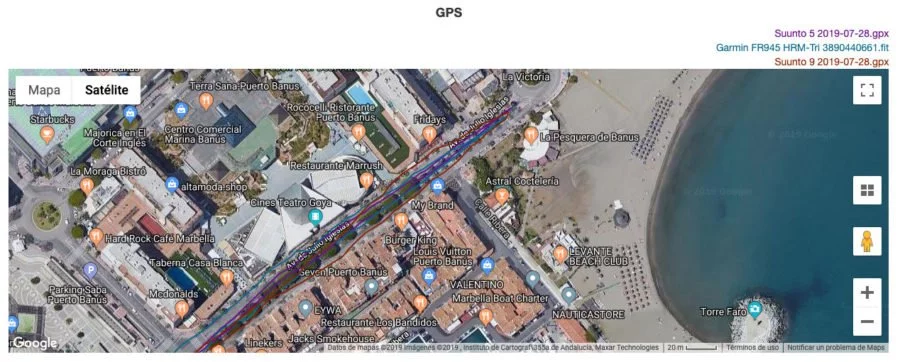
En este caso el Suunto 5 tiene un notable. El rendimiento ha sido mejor que en el caso del Suunto 9 que en la mayor parte de esta zona ha tenido bastantes problemas.
En ciclismo, como es habitual, no hay nada que objetar.
Es lo habitual con cualquier dispositivo GPS.
En ciclismo la velocidad es superior, por lo que los puntos están más separados entre ellos facilitando el trabajo a los algoritmos. Es muy raro ver errores de track al montar en bici.
La natación en aguas abiertas es, sin embargo, todo lo contrario. Lo raro es encontrar un track que esté bien dibujado y no tenga errores. El motivo no es otro que la pérdida de señal cada vez que la mano entra en el agua para dar la brazada. En ese momento el reloj pierde totalmente la señal (porque es una señal digital que no se transmite bajo el agua) y debe recuperarla en el escaso plazo de tiempo que volvemos a sacar la mano fuera. Y así constantemente.
Aquí puedes ver una comparativa entre el Forerunner 945 y el Suunto 5, cada uno en una muñeca. El Polar Vantage M iba debajo del gorro para asegurar que estaba siempre por encima del agua y no perdía señal, para tratar de tener datos perfectos de la ruta.
Claramente no fue el caso, parece que al modo de carrera (que es el que usé en el Polar) no le gustó la velocidad tan baja de la natación y tiene un track totalmente errático, peor que el de los relojes con los que sí estaba nadando.
Te amplío la zona del giro.
Y por ganar claridad, eliminando el track del Polar.
Ahora más claro, ¿verdad? Al menos el track del Polar nos sirve para determinar que efectivamente no han marcado ninguna locura ninguno de los dos.
En este caso el Suunto se ha mostrado ligeramente más errático, tanto en el giro como en el proceso de llegar hacia la playa. El Garmin ha sido más fino en el desarrollo. Aún así Suunto ha mejorado un montón en aguas abiertas, hace unos meses era descorcentante, tanto en el dibujo del track como en los resultados que daba, pues salían muchos más metros de los nadados en realidad. ¿Hoy en día? Muy similar al resto de sus competidores y perfectísimamente válido.
¿El resumen de todo esto? Pues que a día de hoy los datos de GPS es una cosa que cada vez tiene menos cosas que preocuparme. Este año es evidente que hay cambios importantes por la adopción por parte de todos los fabricantes del nuevo chipset de Sony, pero cada vez me cuesta más encontrar errores.
O al menos errores de bulto. No quiere decir que los tracks sean perfectos. No lo son, pero porque tampoco podemos esperar que lo sean. Te recuerdo que estás recibiendo la señal de unos satélites que están a miles de kilómetros de la tierra en un pequeño dispositivo de 45mm que está puesto en tu muñeca. Lo fascinante es que a pesar de todas las dificultades que se plantean el rendimiento sea como es.
En cuanto al Suunto 5 en particular he visto buenos datos, tanto de forma individual como comparándolo con su hermano el Suunto 9. Está claro que la antena externa juega a su favor y, a pesar de estar en contra de la corriente de diseño actual, es la causa principal de obtener mejores resultados que el 9.
Sospecho que el Suunto 5 va a cobrar mucho protagonismo en futuras pruebas de otros dispositivos, va a ser una buena piedra de toque.
Mi opinión
Tengo la impresión que el mercado no va a ser justo con el Suunto 5 y que no va a tener el impacto que éste modelo merece. Tal vez me equivoque, pero creo que se va a quedar a la sombra del Suunto 9 (no Baro), a pesar de tener casi las mismas prestaciones.
El Suunto 5 es un mini Suunto 9. Es más pequeño, pero prestacionalmente ambos ofrecen prácticamente lo mismo. Y en esta generación ya no tiene el problema del primer Spartan Trainer, penalizado por un uso excesivo de plástico para lo que Suunto nos tiene acostumbrados.
Este Suunto 5 es un Suunto de verdad. Buenos materiales, calidad de construcción y hecho en Finlandia (el Spartan Trainer es «made in China»). ¿Que lo convierte en un reloj más caro que el Spartan Trainer? No cabe ninguna duda, pero es lo que el cliente Suunto busca, un producto de calidad porque es lo que siempre han ofrecido.
Va a tener una competencia feroz con modelos de otras marcas que se moverán en los mismos rangos de precios, como el Polar Vantage M, el Garmin Forerunner 245 o incluso el Garmin Instinct. Todos ellos están fabricados íntegramente en polímero de fibra (plástico, de buena calidad, pero en definitiva plástico), mientras que el Suunto es un reloj con más empaque y calidad de construcción que combina ese mismo polímero con otros materiales como acero o cristal.
Al Suunto 5 solo le puedo poner dos pegas: la pantalla y el consumo de batería de su sensor de pulso óptico. Todo lo demás me gusta, y no tendría ninguna objeción en utilizarlo en mi día a día si mi deporte principal fuese correr. Sin embargo mi deporte es el triatlón, y en ese segmento hay opciones que están creadas más específicamente para ese uso.
El Suunto 5 es una opción muy equilibrada para el que busca un reloj para correr en asfalto o montaña y no necesita del altímetro barométrico. Cumple con todos los requisitos que un reloj de este tipo debe cumplir y, sin embargo, creo que va a vivir a la sombra de unos cuantos modelos tanto de Suunto como de otras marcas.
¡Gracias por leer!

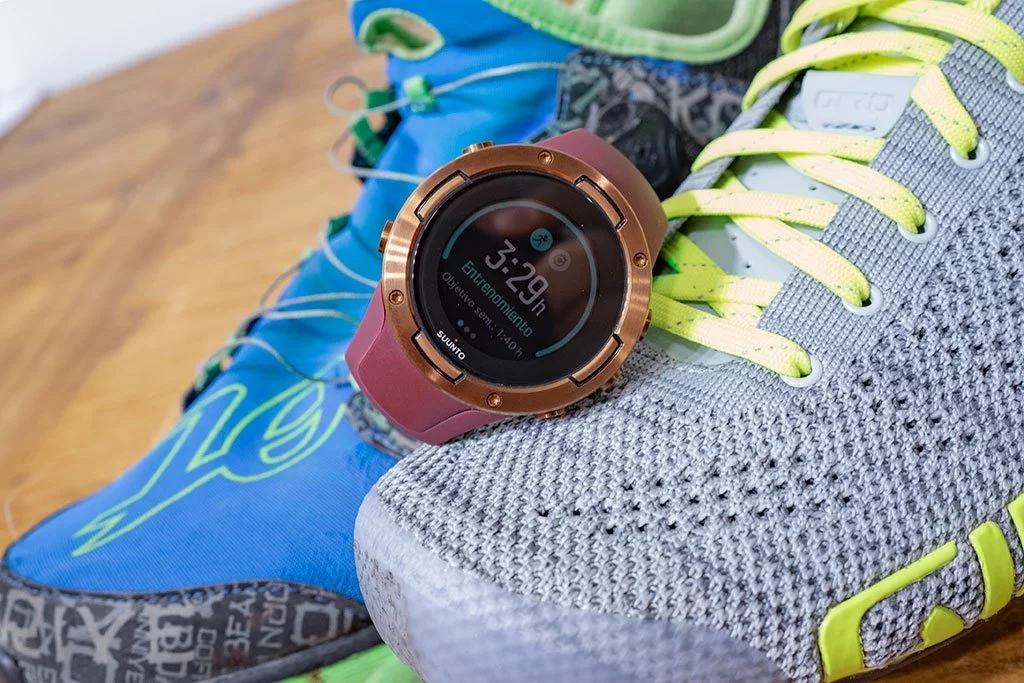
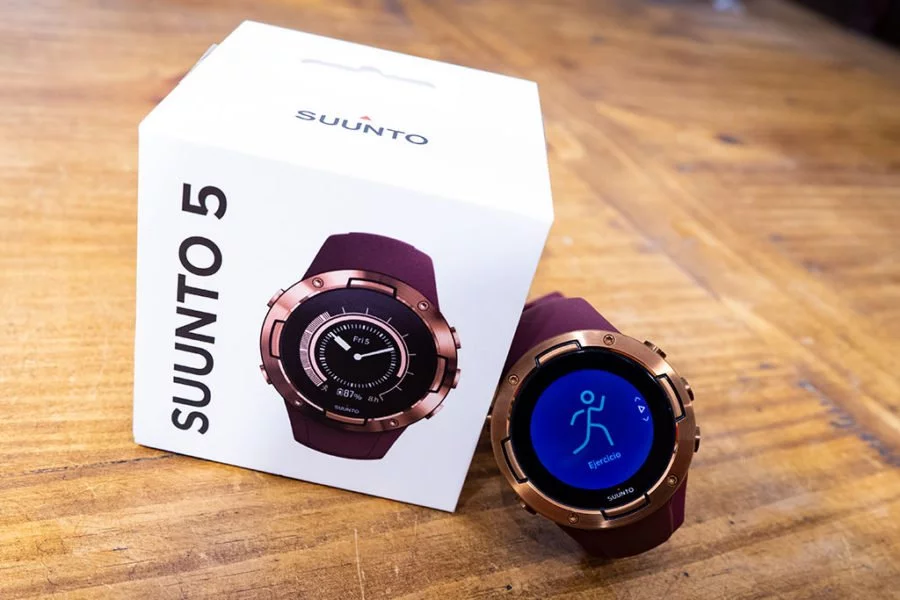
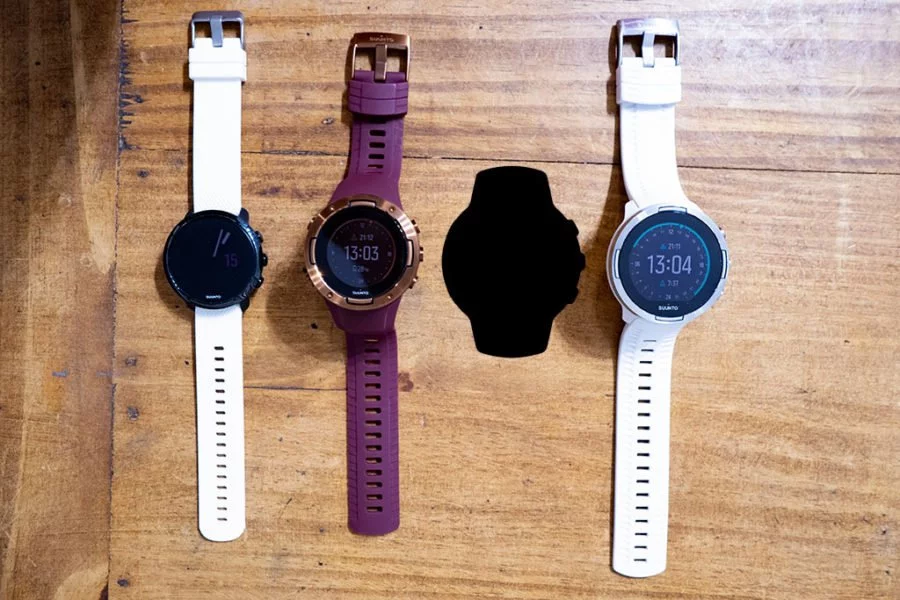
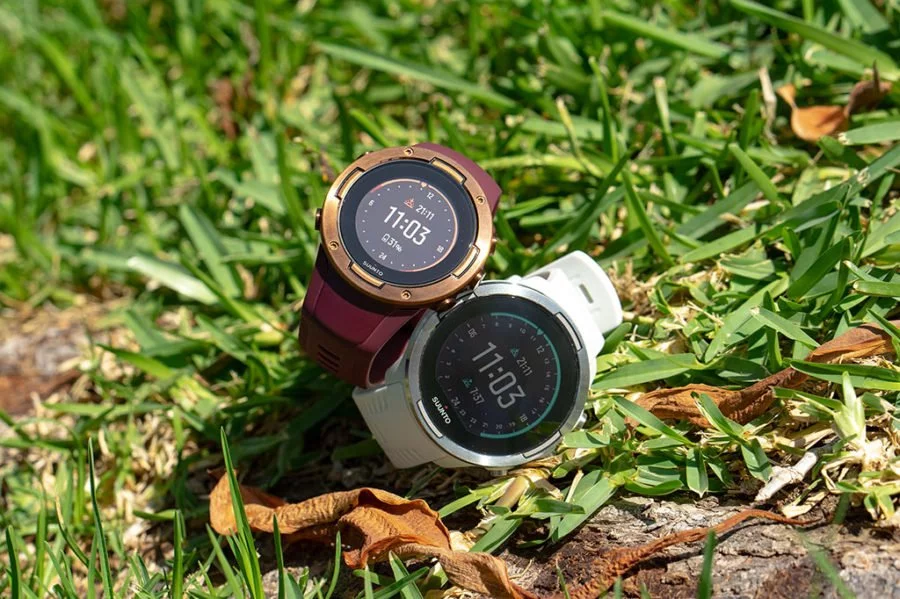
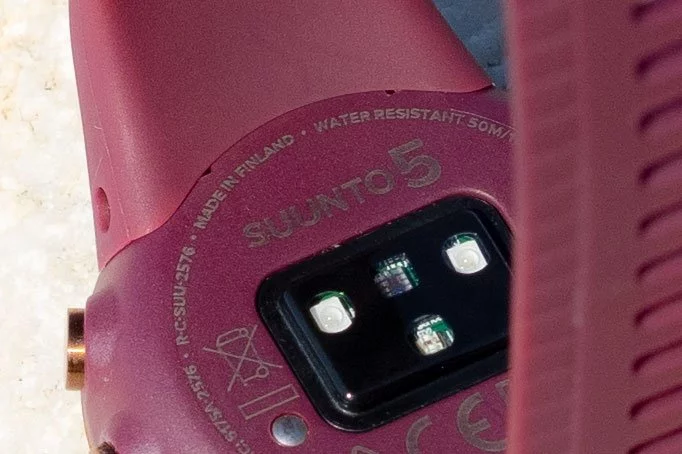
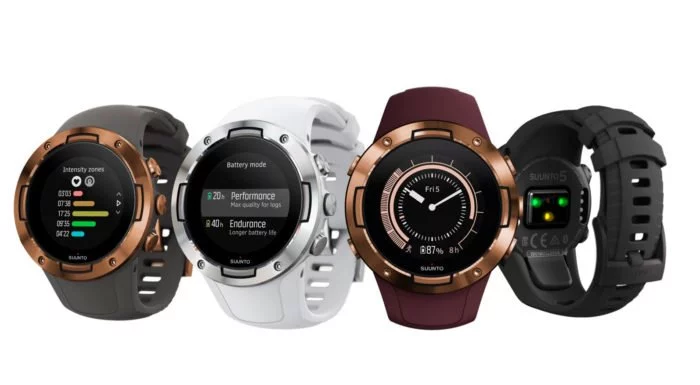
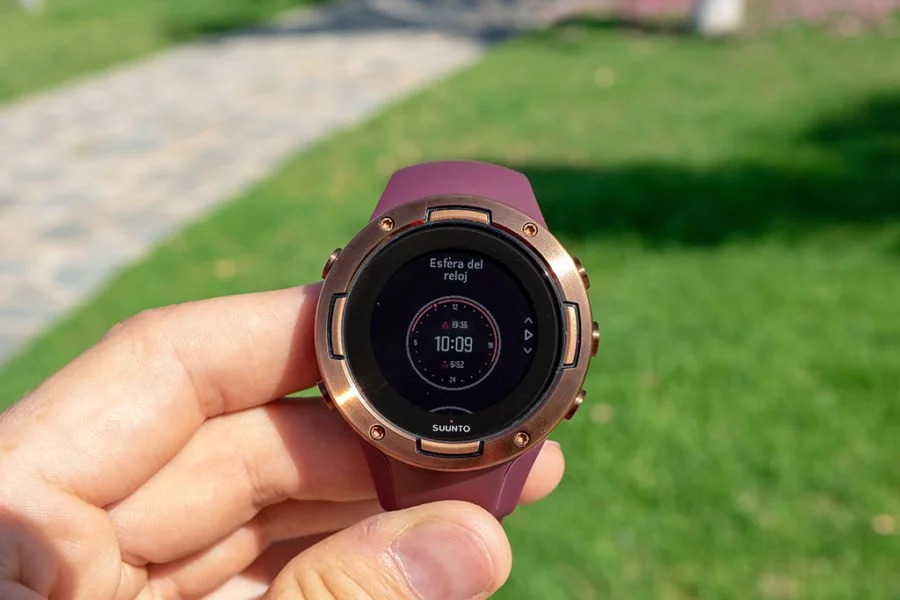
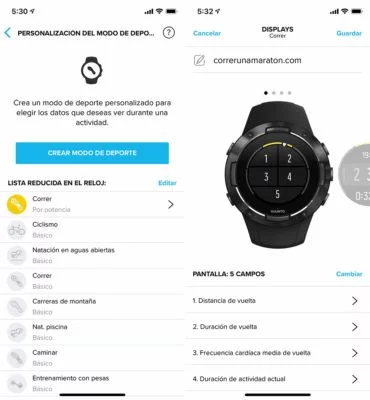
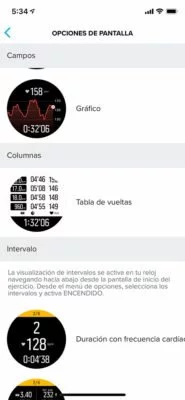
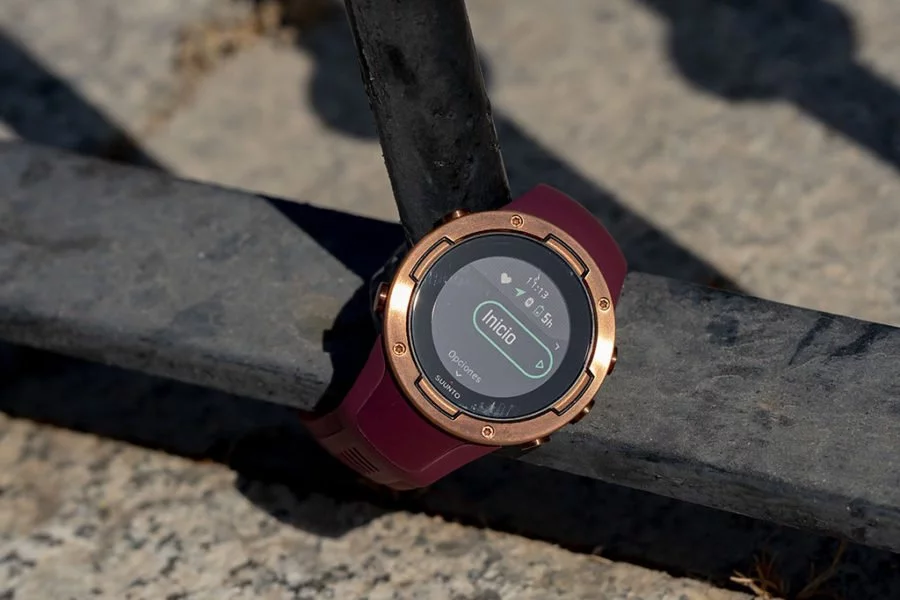
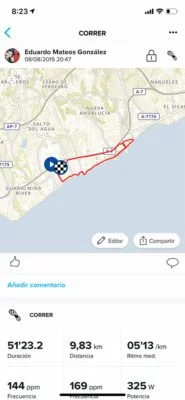

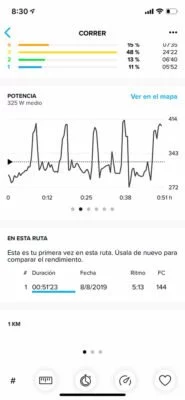

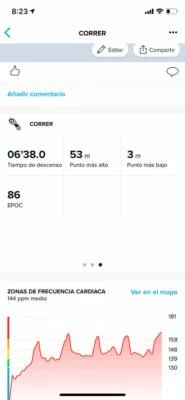
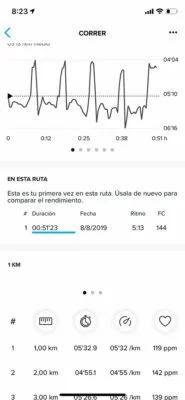

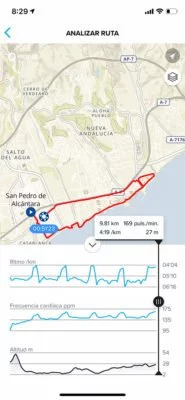

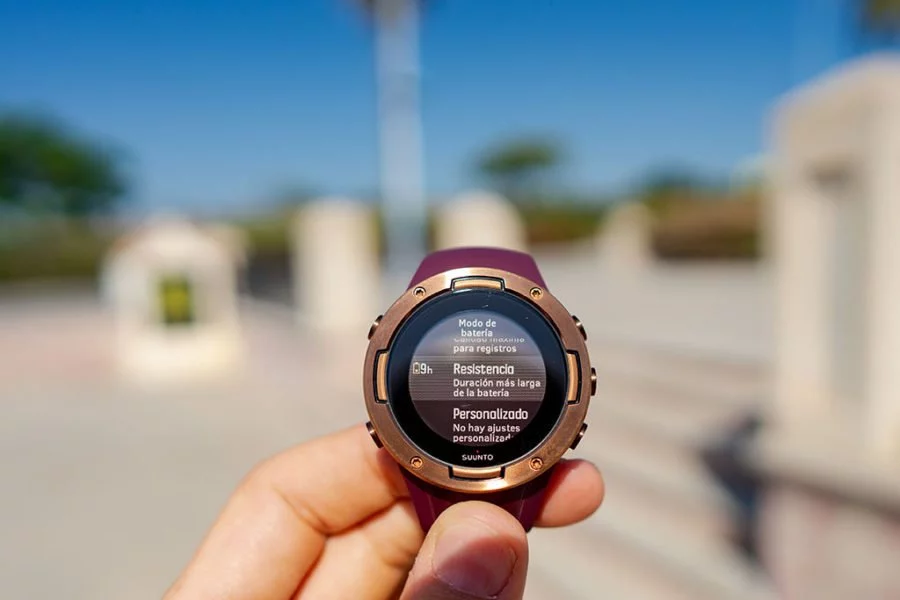
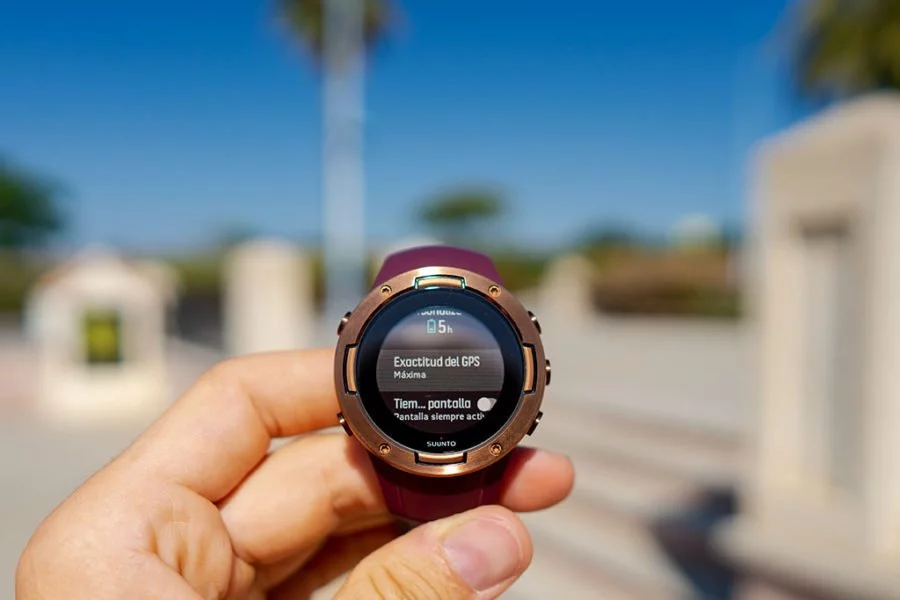
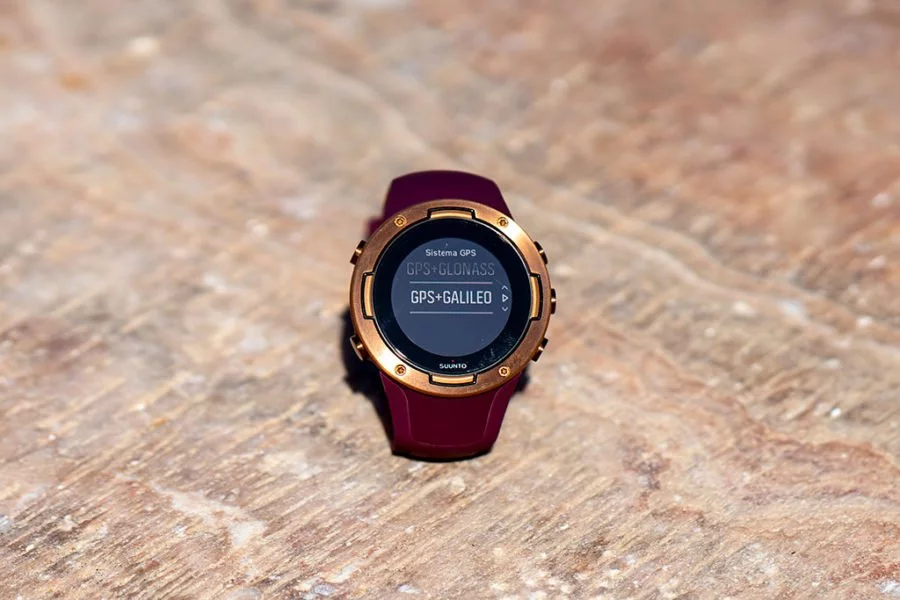
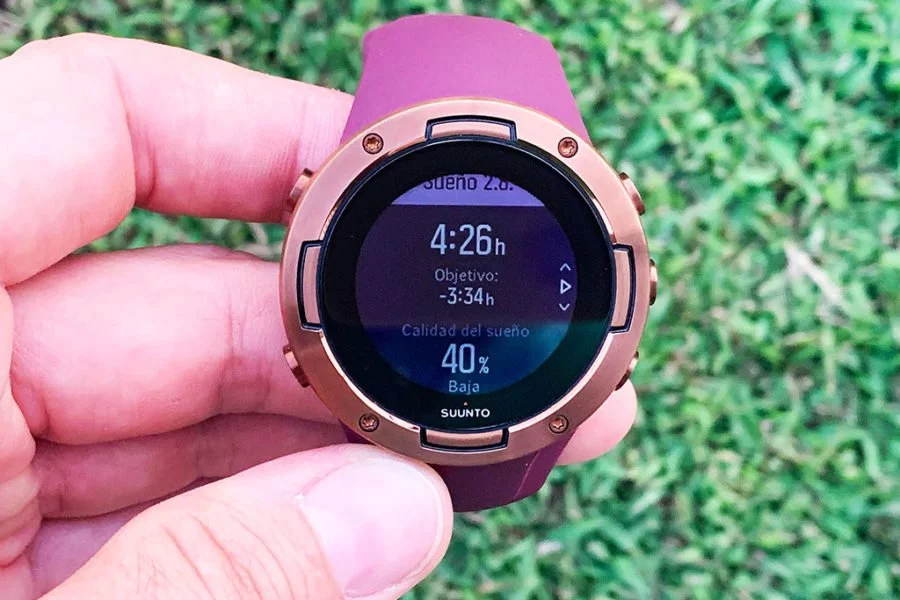

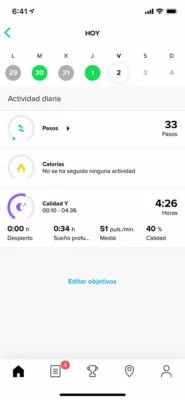
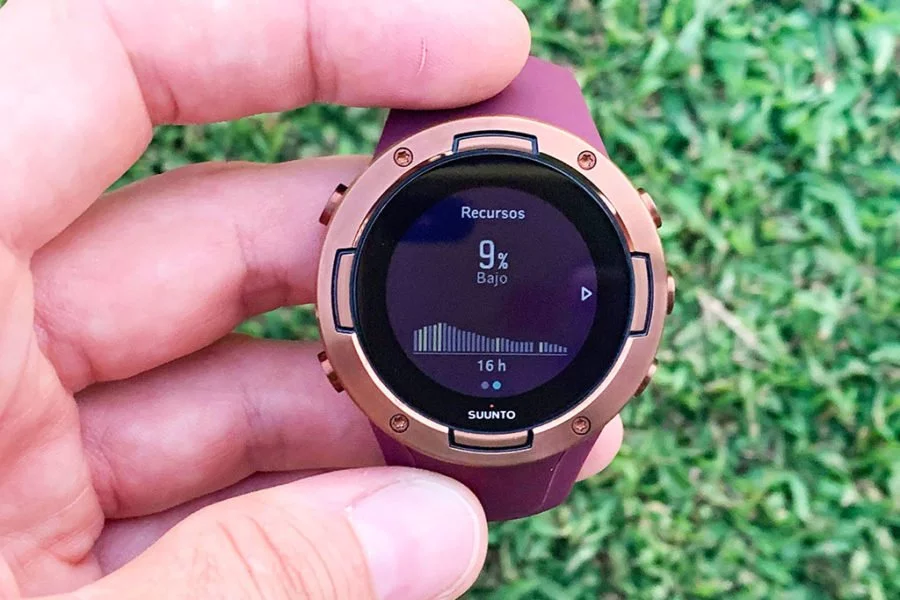
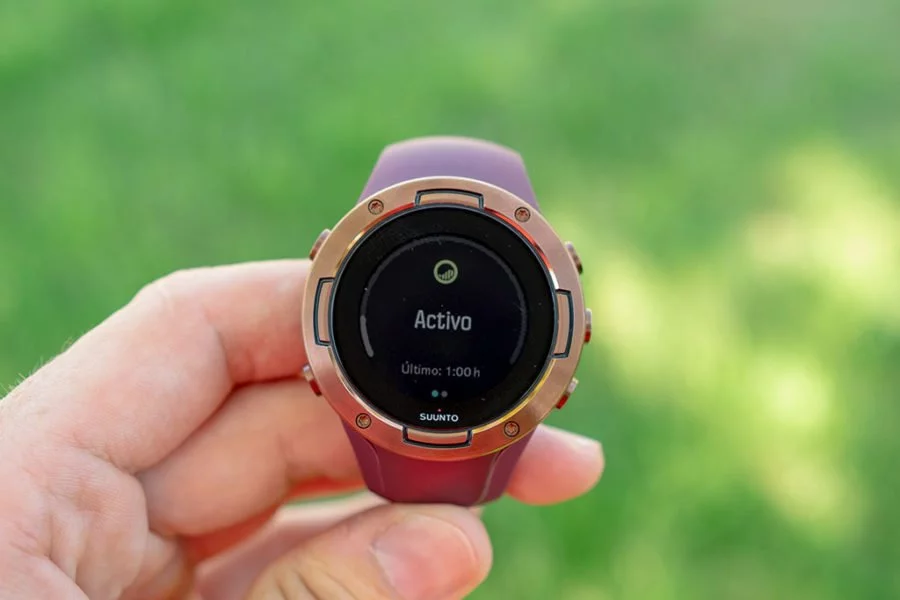
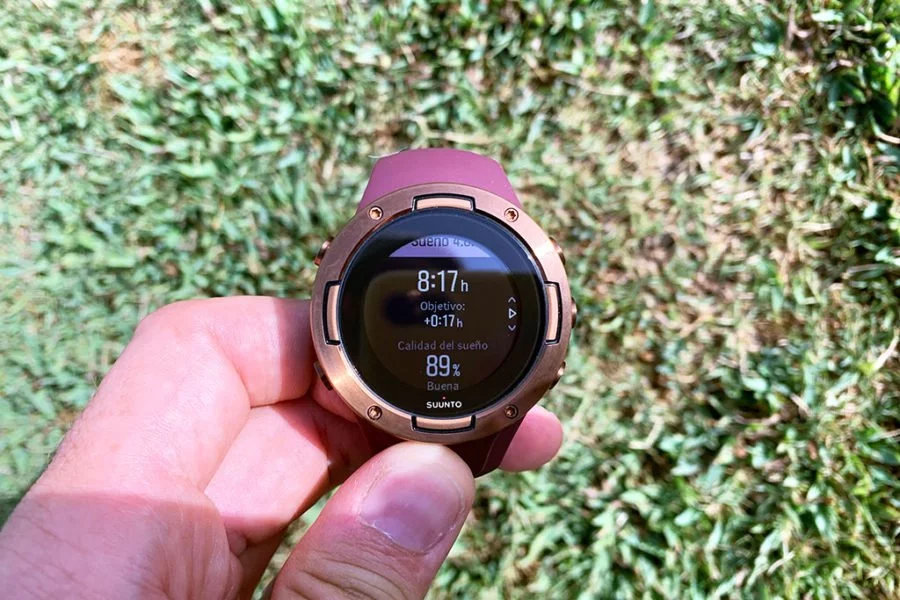
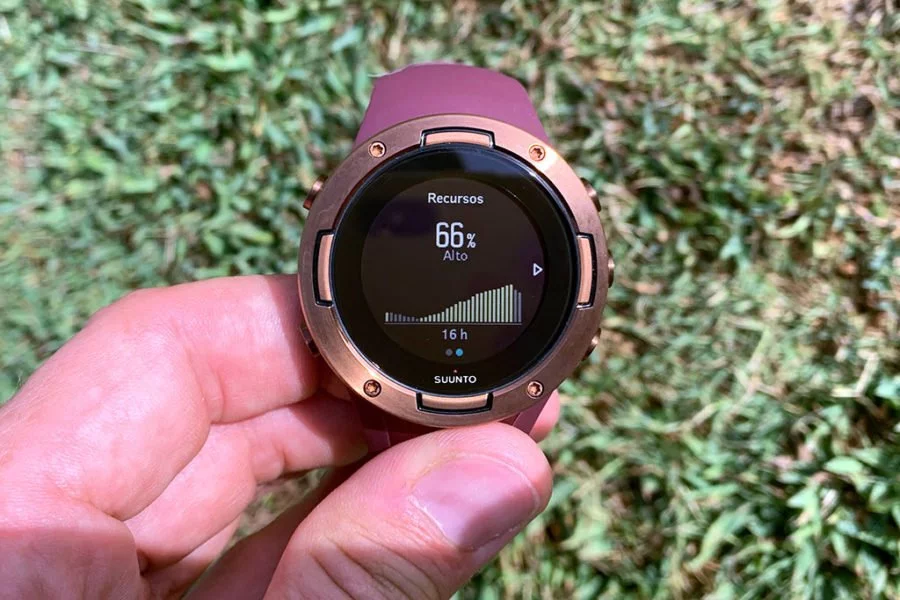
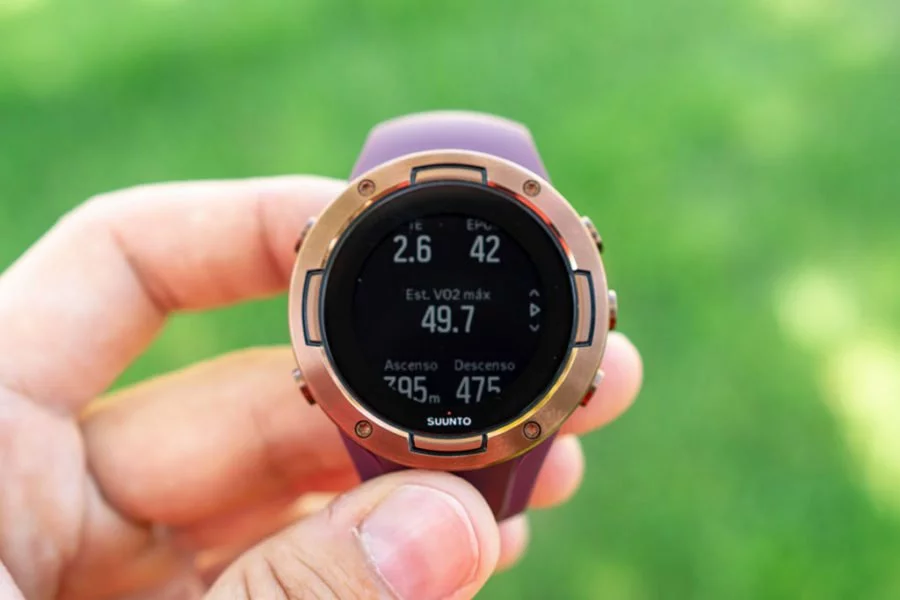
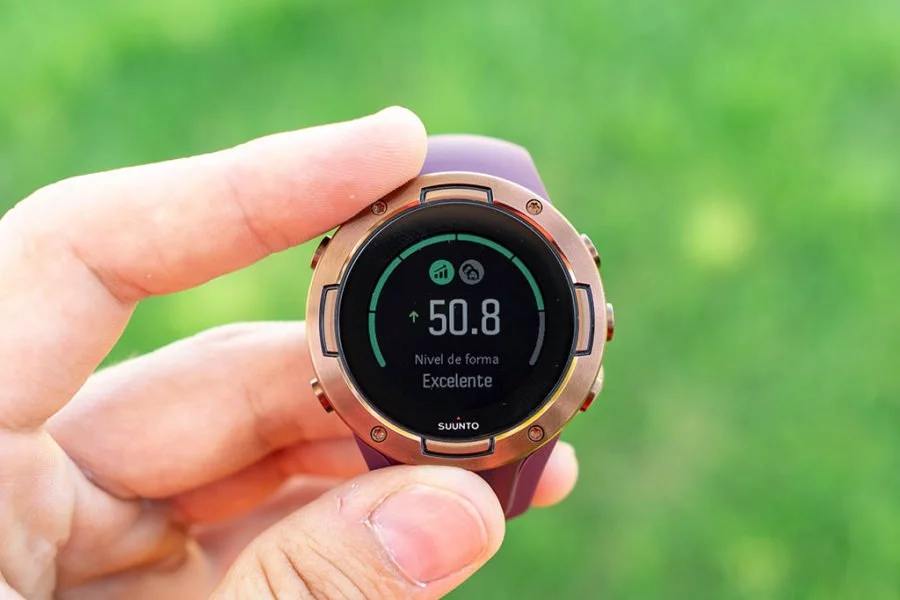
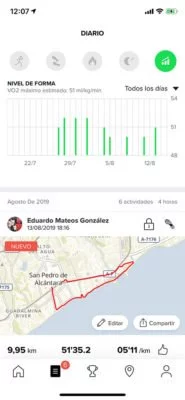

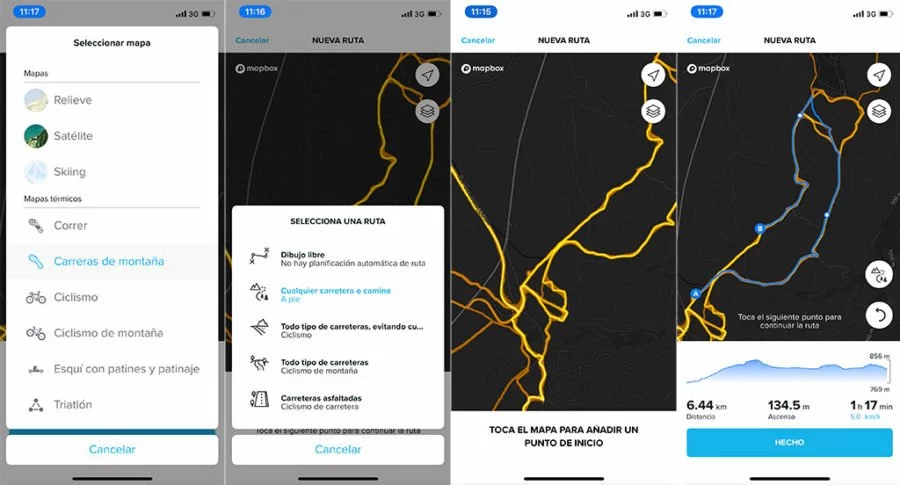
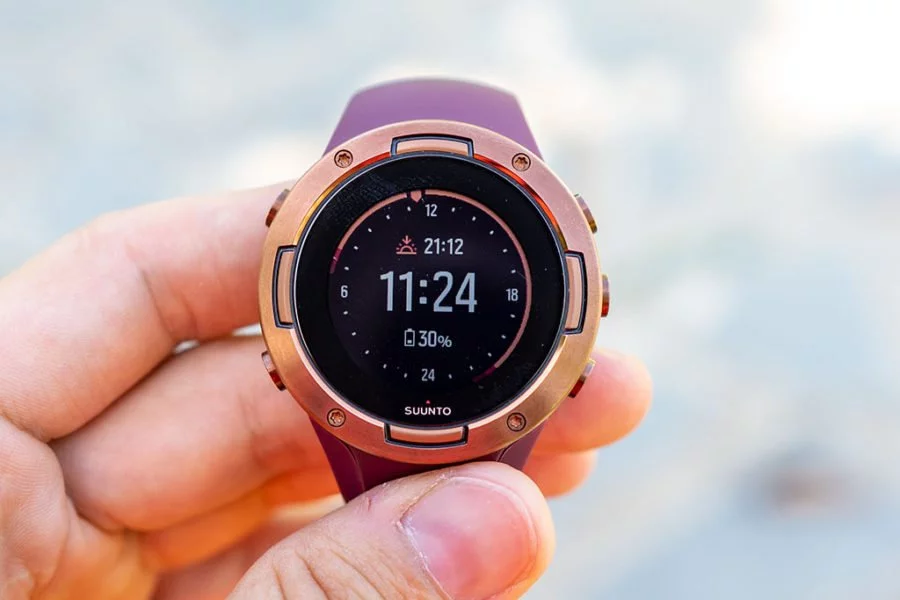

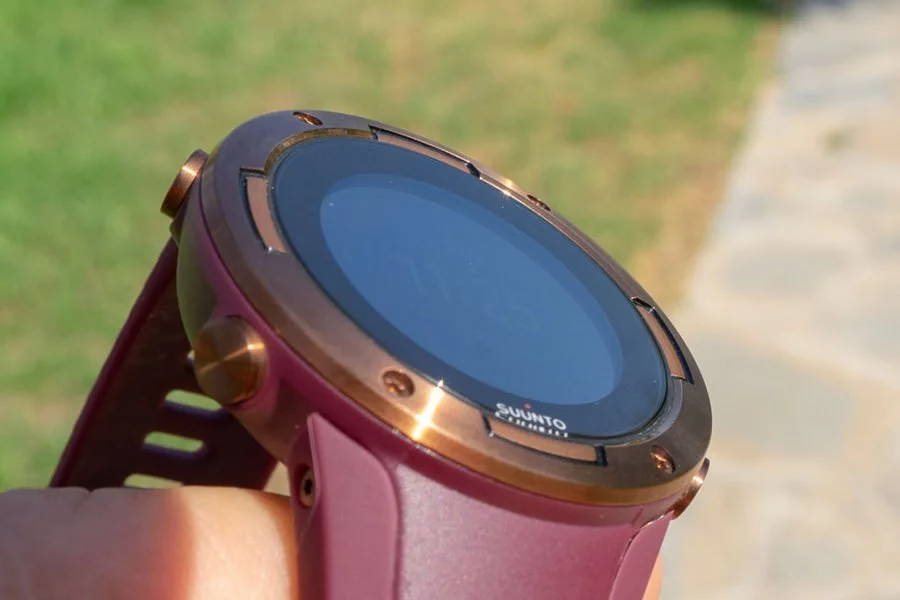
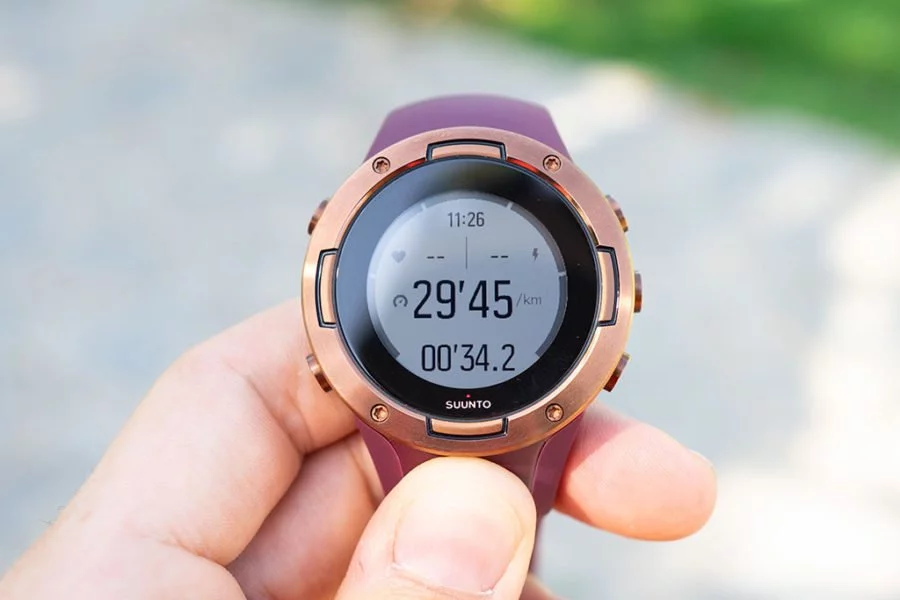


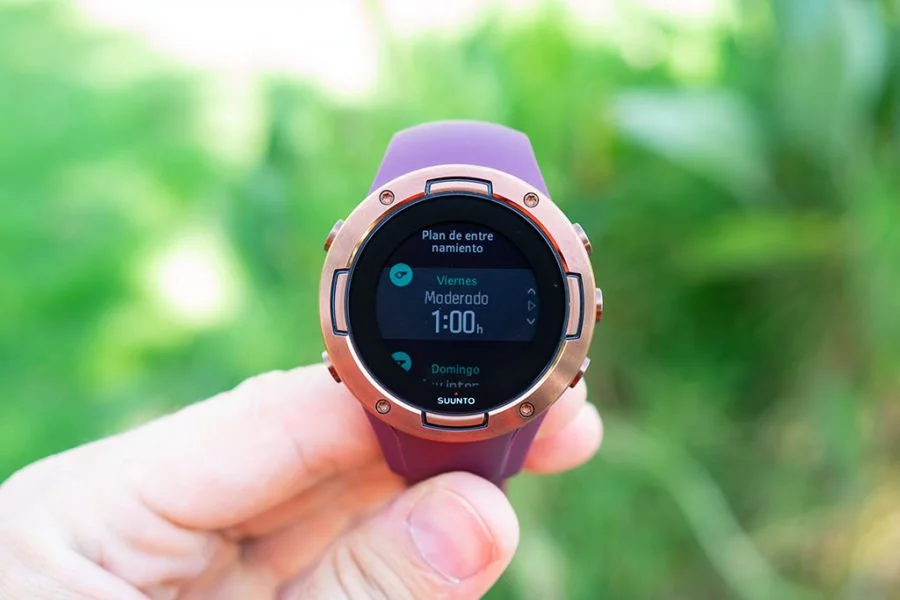













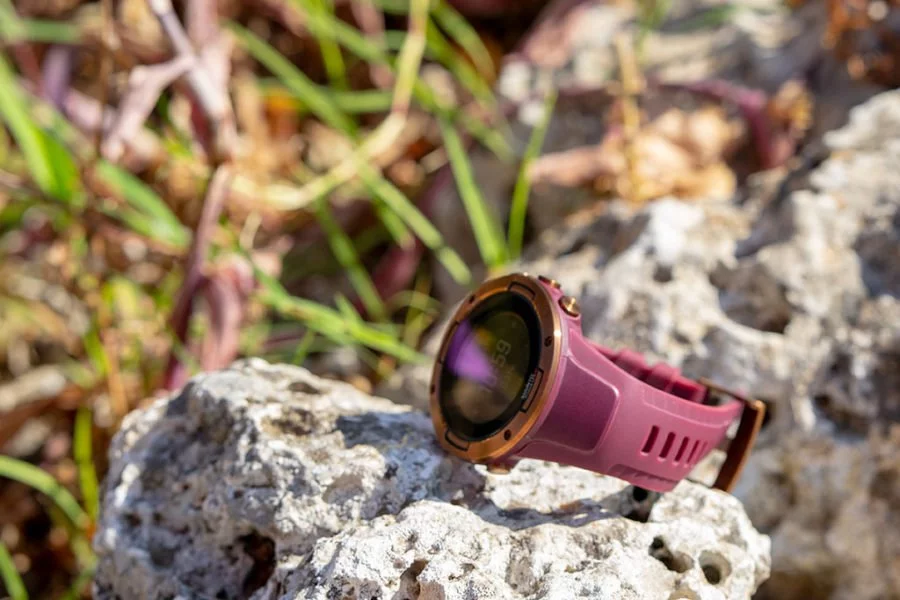

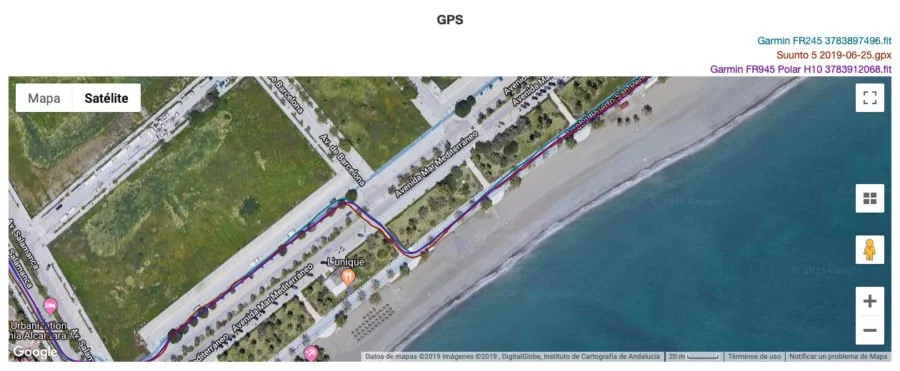
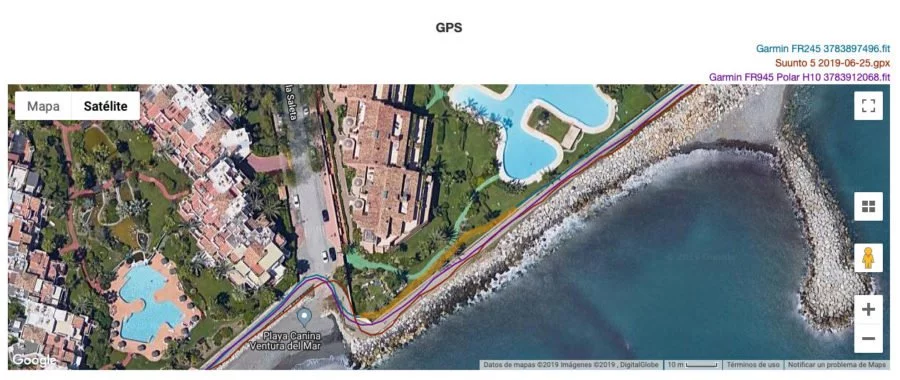

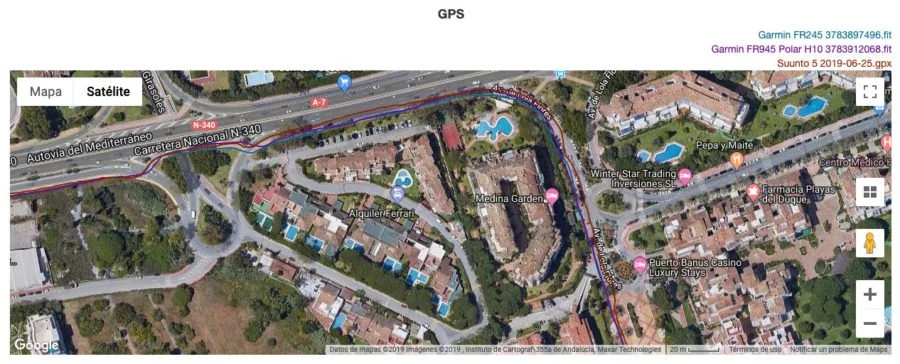
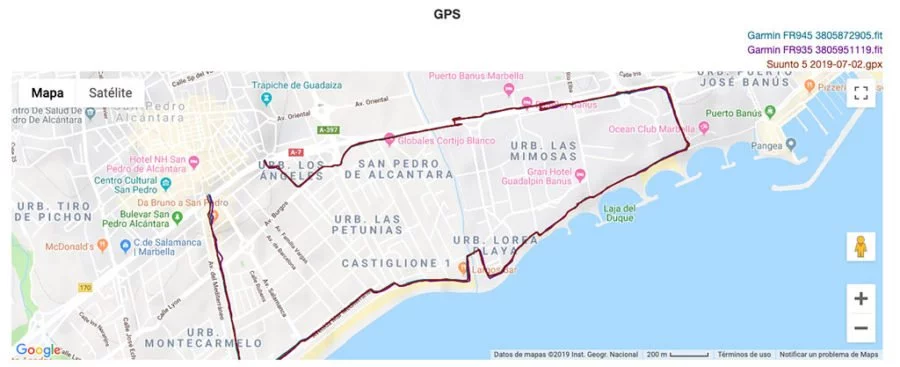
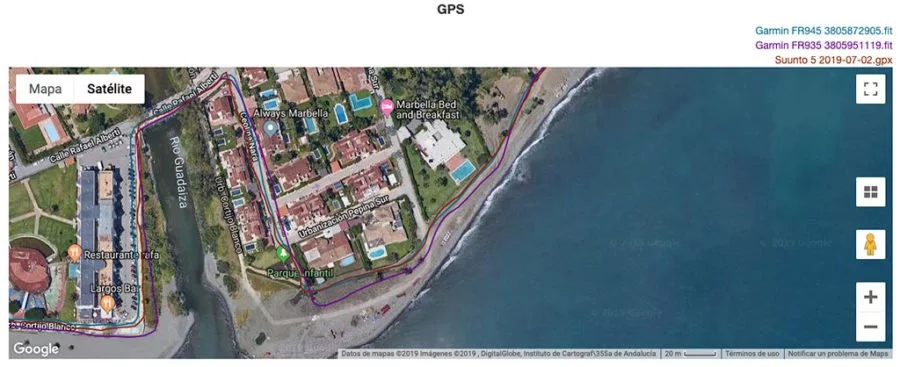
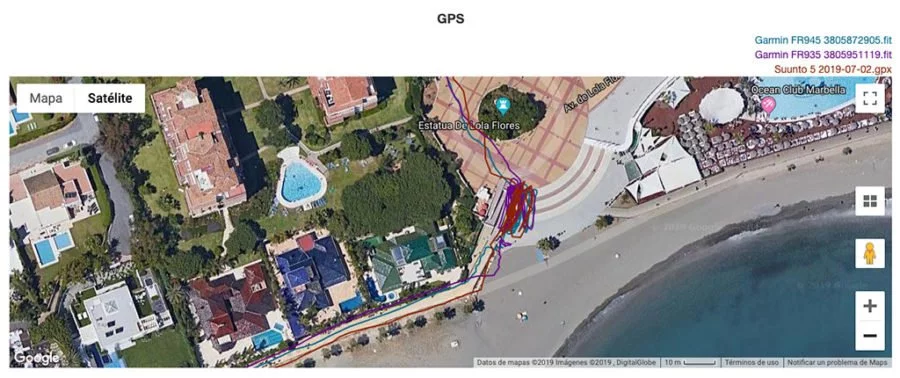

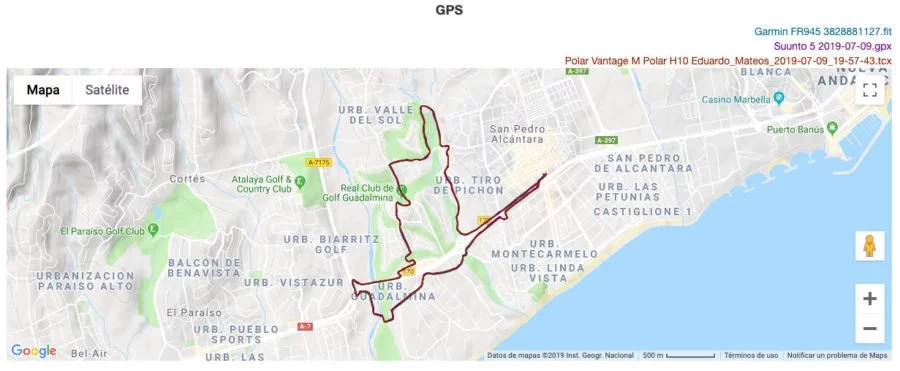
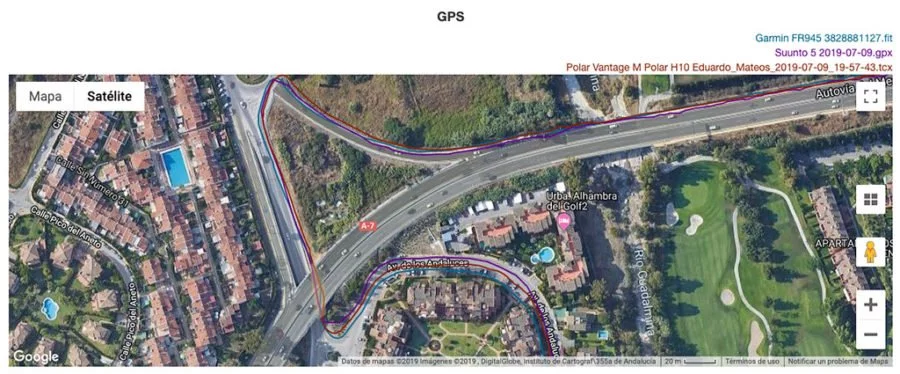
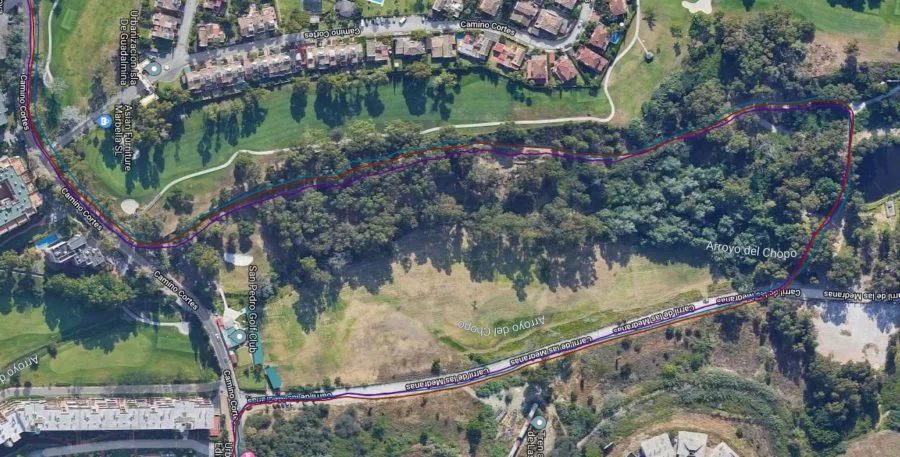
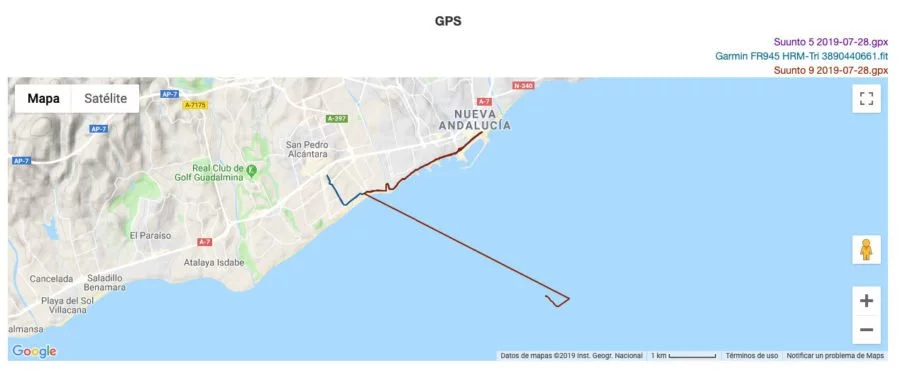

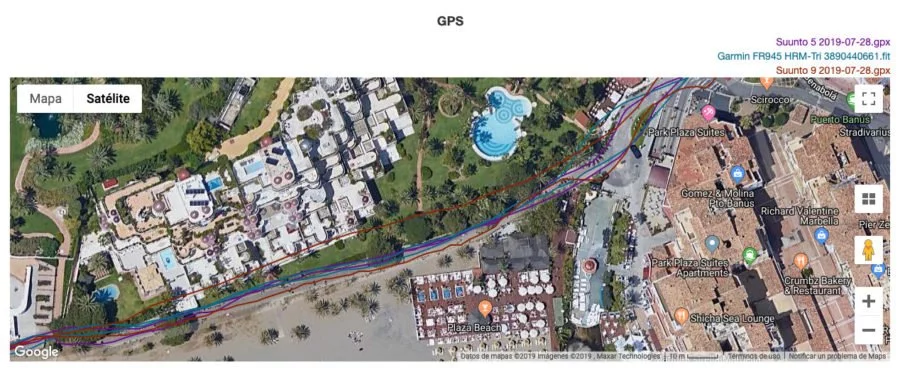
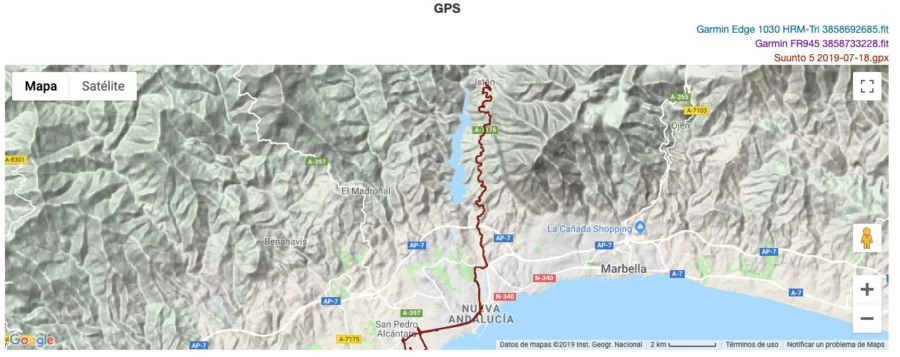
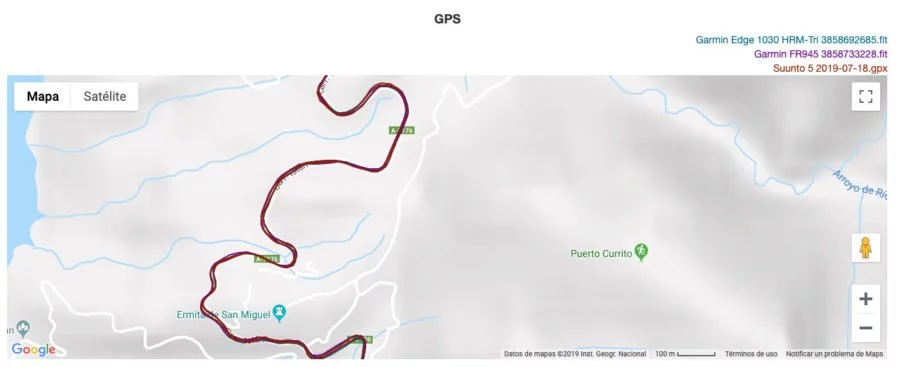
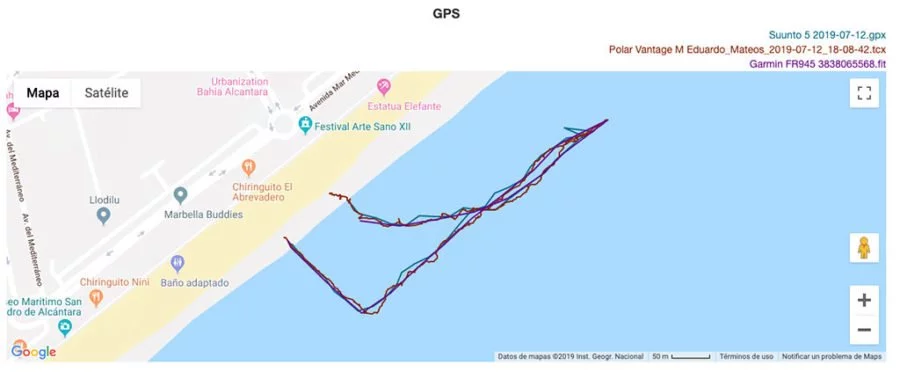
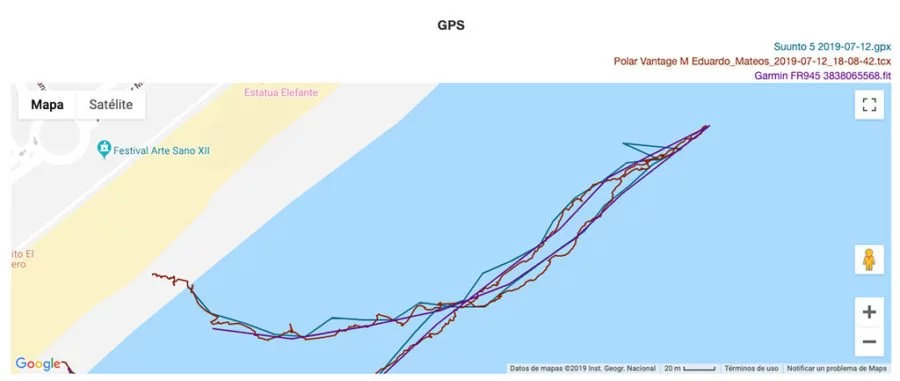
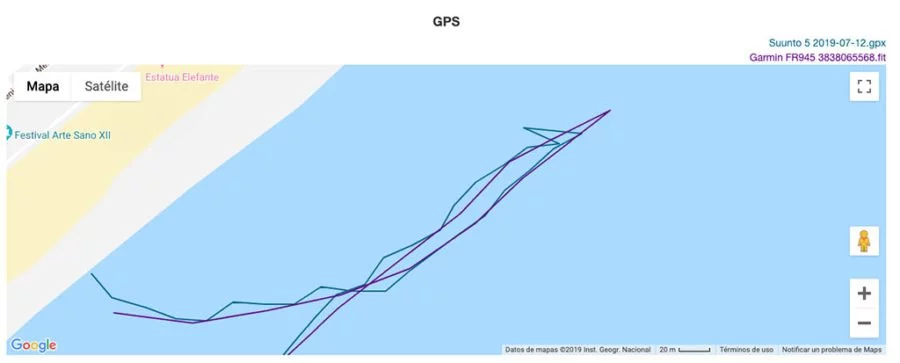

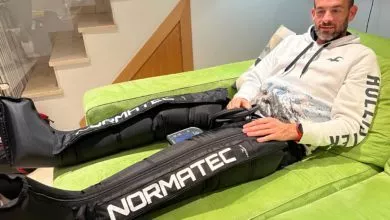
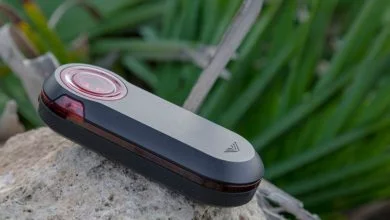

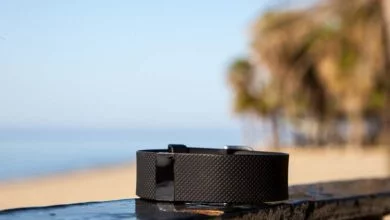
Como siempre Edu, un super análisis. Para cuando uno igual sobre el Polar Ignite. Gracias por estar siempre a la última.
Gracias Ernesto.
El Polar Ignite es el próximo. Lleva ya un par de días en mi muñeca.
excelente análisis Eduardo. una consulta: tengo el suunto 9 y me gustaria saber si vendrá alguna actualización para que el reloj tenga las novedades que presenta el suunto 5 como que aparezca el valor VO2 max? muchas gracias un saludo
Gracias.
No, en principio el Suunto 9 no contempla esas novedades, principalmente porque son métricas licenciadas de Firstbeat por las que Suunto debe pagar un canon. Implementarlas a mitad de vida del producto sería muy complicado.
De todas formas, recuerda que a día de hoy en Movescount puedes ver una estimación de VO2max en el análisis del ejercicio.
Una pregunta eduardo por casualidad sabes si vendrá alguna actualización para el suunto 9 que incluya las novedades del suunto 5? Como el valor VO2 max etc?. Un saludo muchas gracias
En mi opinión esta iteración es demasiado poco ambiciosa, y Suunto está perdiendo el paso con respecto a Garmin. No hablo solo del Suunto 5, también del 9. El seguimiento de rutas está bien, pero tener mapas en el reloj es otro nivel. Yo al monte no salgo sin los mapas offline del View Ranger, en el móvil, y con esto puedo quitármelo, con las migas de pan sobre el track no. Sumas a eso la incertidumbre en torno a sus plataformas web y móviles, que a mí me tienen frito, y el pequeño extra de la música, y yo no me lo pienso, aunque nunca haya probado Garmin.
Por cierto, Eduardo, se me ha ocurrido que estaría genial complementar estos estupendos análisis de relojes que haces con otros complementos del running, como ropa técnica, suplementos, zapatillas y cualquiera de esas otras cosas en las que el runner afloja la pasta, jeje. Una sugerencia inocente, entiendo que cada uno hace lo que puede y quiere, pero se me había ocurrido que salir a correr vas a hacerlo de todas todas, jejeje.
¡Saludos!
Para los análisis de zapatillas y demás, tendrían que cumplirse dos cosas:
– Saber algo de zapatillas
– Días de 48 horas
Lo de aprender de zapatillas es factible, los días de 48 horas habrá que seguir trabajando en ellos 😉
Enhorabuena por esta y el resto de tus reviews, son geniales!
Solo me queda una duda con este suunto. El Vantage V que tenia lo devolví y adquirí un garmin 245 porque los entrenos por intervalos son mucho mas completos.
En este suunto 5 podría programarse un entreno de (por ejemplo) 10×1000 a ritmos de entre 3:20-3:30 (y si vas por arriba o abajo del ritmo te salte una alarma como en garmin) y que ademas saliese un resumen de cada lap cuando acabas la serie?
Ese tipo de entrenamiento sí lo puedes configurar, pero no podrás hacer por ejemplo 5×1000 y 5×400, porque sólo permite repetir una distancia determinada.
La verdad, si programas muchos entrenamientos de este tipo, tu opción es Garmin.
Hola, supongo que aparte del propietario Apple watch no habrá otro reloj de deporte con sistema operativo de apple lo mismo que este tiene el de Google..muchas gracias por tu análisis Eduardo. Un saludo
No, el único reloj con software de Apple es el Apple Watch.
El que tiene software de Google es el Suunto 7.
Hola. Muchas gracias por los análisis, están súper completos. Una cosita, dices en la revisión del vantage M que este y el FR 245 son los mejores relojes de este tipo. Sin embargo, la puntuación del suunto 5 es mejor (salvo por la app) ¿a qué se debe esto? Muchas gracias ¡Un saludo!
Gracias Emma.
No te guíes exclusivamente por la puntuación, porque ahí aplico una nota que luego tiene la misma ponderancia en la nota final independientemente que sea más o menos importante. Además, la nota la asigno al lanzarse el modelo al mercado y no se revisa con las sucesivas actualizaciones (sería una locura…). Eso por ejemplo perjudica a los Vantage, que han recibido muchas actualizaciones a lo largo de su vida.
Buenos días Eduardo.
Una pregunta muy sencilla. En mi pulsera XIAOMI dispongo de despertador con alerta por vibración, cosa que durmiendo con mi mujer y ( tiene narices con casi 4 años que tiene ya… ) mi hija en la misma cama y despertándonos a distintas horas es fundamental.
Tiene el SUUNTO 5 esta función?? si no fuera así, me puedes recomendar algún reloj de similares prestaciones que si la incluya??
Muchas gracias de antemano.
Saludos.
Sí, puedes configurar la alarma para que suene un día o días repetidos. Y también podrás seleccionar vibración, tonos o ambos para las alarmas.